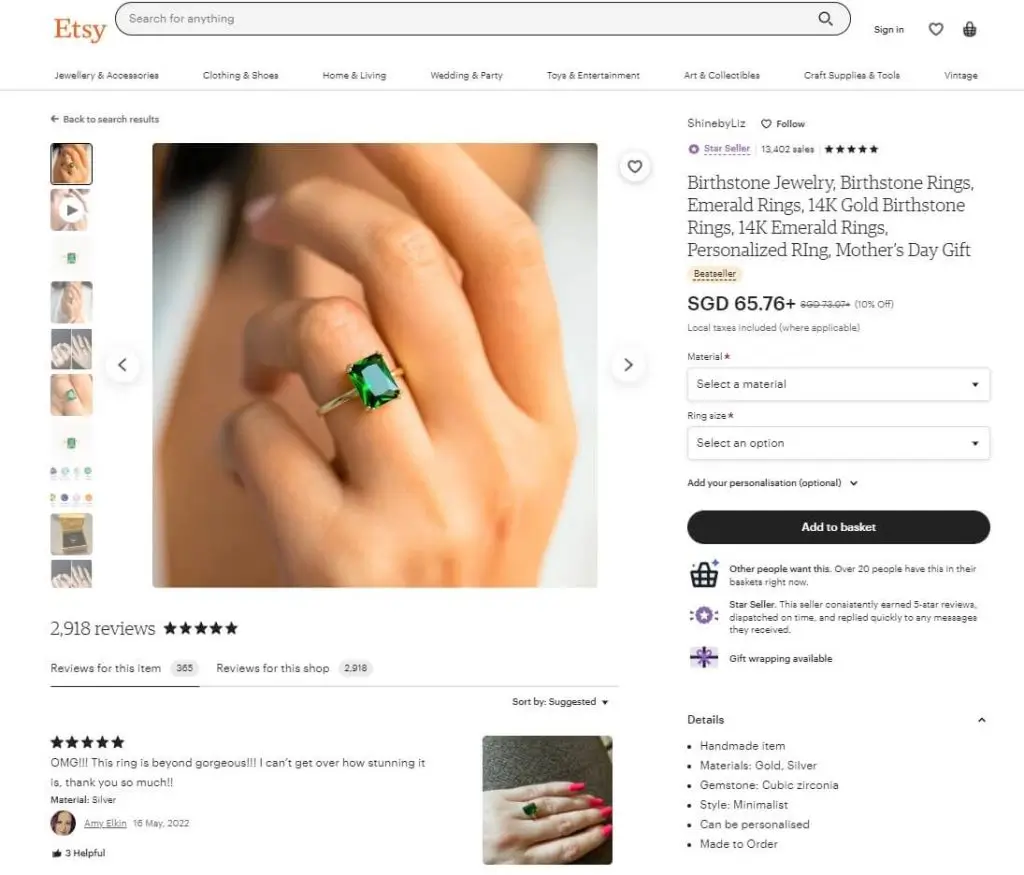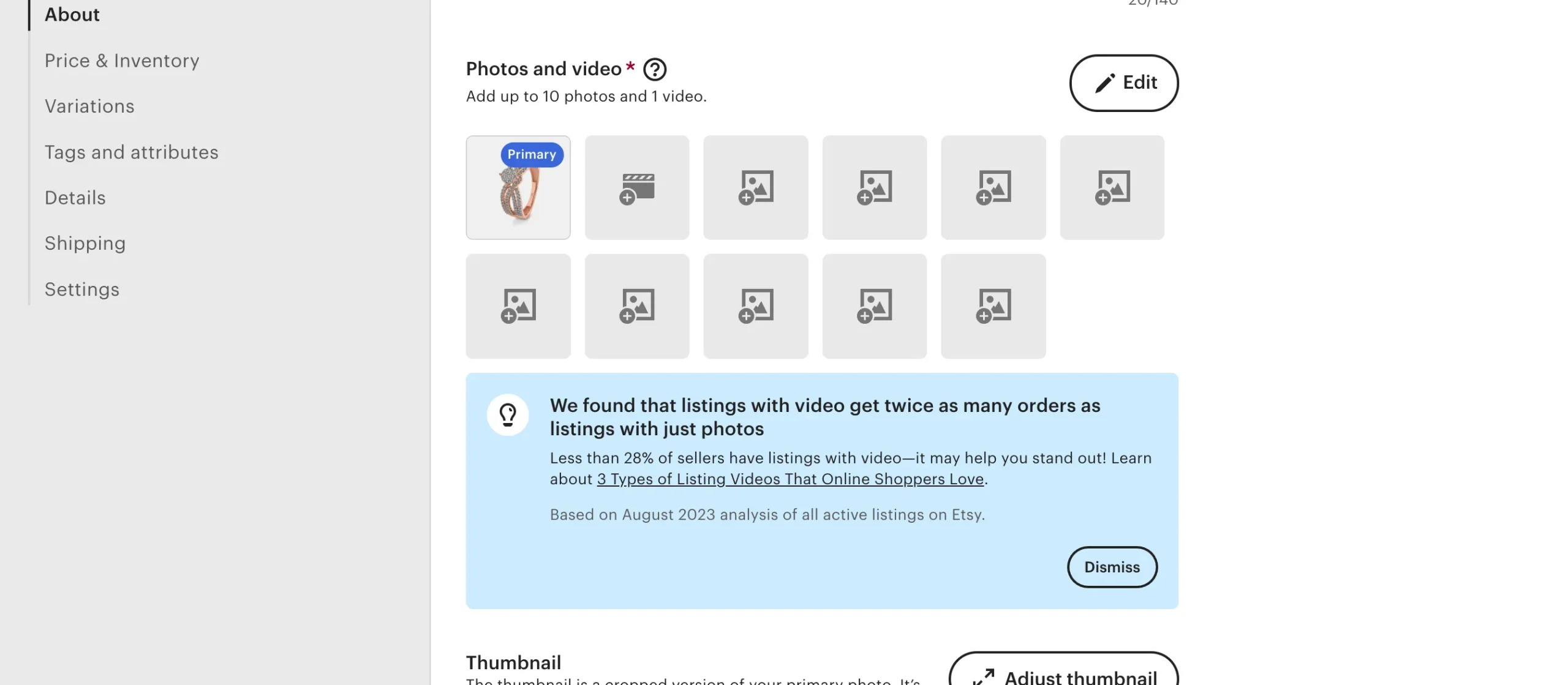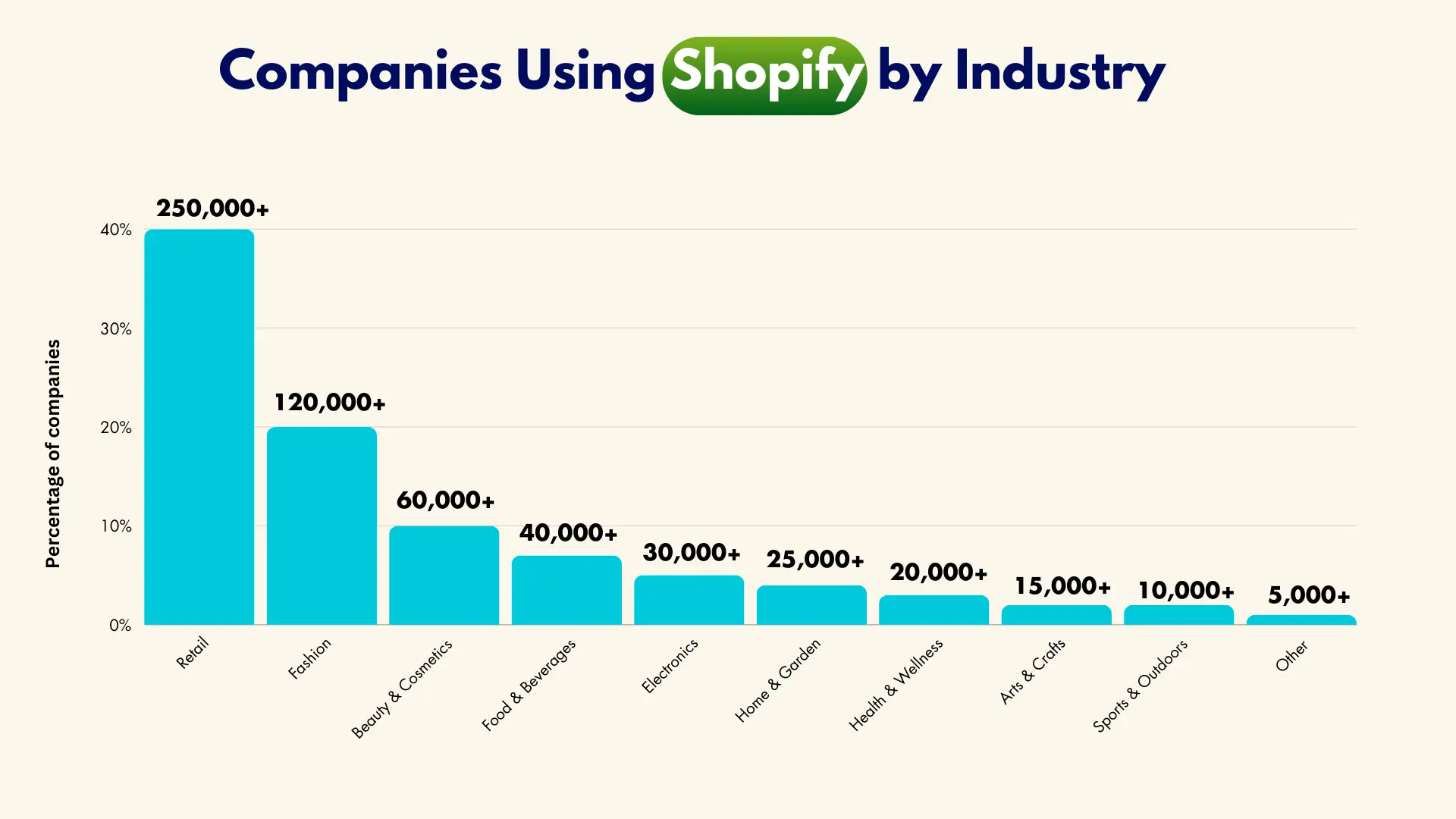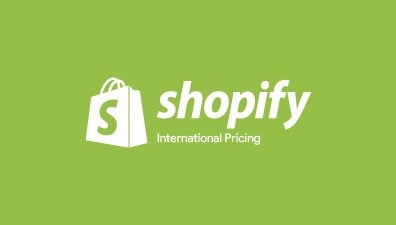The online market has seen exponential growth in recent years, driven by advancements in technology, changing consumer behaviors, and the rise of social commerce. With countless options available, Shopify vs Etsy have emerged as two of the most popular platforms for online sellers. While Shopify is known for its robust, customizable eCommerce solutions, Etsy has carved out a niche as the go-to marketplace for handmade, vintage, and unique goods.
This blog post delves deep into the Shopify vs Etsy debate, providing a detailed analysis to help you determine which platform best suits your needs. By understanding the key differences, features, and potential drawbacks of each, you’ll be better equipped to make an informed decision and set your business up for success.
Table of Contents
Overview of Shopify vs Esty
While Shopify provides a fully customizable eCommerce experience suitable for businesses of all sizes, Etsy is a specialized marketplace designed for artists, craftsmen, and vintage sellers. In this section, we will provide an in-depth overview of Shopify vs Etsy, focusing on their distinct features, user bases, and market positions.
Shopify
One of the most widely used eCommerce platforms worldwide is Shopify. It may be used by individuals and companies to create a unique online store to add products and keep track of customer orders without the need for coding expertise. Approximately 4 million eCommerce websites are created by sellers using Shopify every year in 175 different countries. Because of this, Shopify is frequently chosen by beginners and small enterprises.
No matter the size of your business, Shopify is always a good option because of its various options. One of the elements that affect users’ trust and reputation is its scalability. Due to an amazing number of add-ons and integrated features, the eCommerce platform provides the best pleasure even for large stores.
What is Shopify?
Shopify is a comprehensive eCommerce platform that allows individuals and businesses to create their own online stores. Launched in 2006, Shopify was designed to help entrepreneurs build, manage, and scale their online businesses without needing extensive technical skills. Unlike marketplaces like Etsy, Shopify is not a marketplace itself but a platform where users can build their online stores. This means that sellers have complete control over their brand, website design, and customer experience.
One of the standout features of Shopify is its flexibility. Whether you’re selling physical products, digital goods, or services, Shopify provides the tools necessary to create a professional online store that reflects your brand’s identity. The platform offers a wide range of customizable themes, apps, and integrations that allow sellers to tailor their stores to meet specific business needs. Additionally, Shopify supports multiple sales channels, including social media, mobile apps, and even brick-and-mortar locations, making it a versatile option for businesses looking to expand their reach.
Basic Background Information
Shopify was founded by Tobias Lütke, Daniel Weinand, and Scott Lake in 2006 in Ottawa, Canada. Initially created as a solution for Lütke’s own online snowboarding store, Shopify has grown exponentially over the years, evolving from a small startup into one of the most powerful eCommerce platforms in the world. The company went public in 2015 and has since seen rapid growth in both its user base and market share.
The platform is built on Ruby on Rails and offers a wide range of features, from simple website builders to advanced tools for marketing, SEO, and customer management. Shopify’s mission has always been to make eCommerce accessible to everyone, regardless of their technical expertise. This user-friendly approach, combined with a strong focus on customer service and continuous innovation, has made Shopify a favorite among entrepreneurs and businesses of all sizes.
In terms of pricing, Shopify offers various plans that cater to different business needs, from the basic Shopify plan for small businesses to the Shopify Plus plan for large enterprises. This tiered pricing structure allows businesses to start small and scale up as they grow, making Shopify an attractive option for businesses at any stage of development.
Market Share and User Base
Shopify’s market share in the eCommerce industry is significant. As of 2024, Shopify powers over 4 million online stores globally, making it one of the largest eCommerce platforms in the world. The platform has a strong presence in North America, Europe, and Australia, but it is also rapidly expanding into emerging markets such as Asia and Latin America.
One of the key factors contributing to Shopify’s success is its ability to cater to a wide range of users, from small businesses and startups to large enterprises and well-known brands. Some of the most successful companies in the world, including Gymshark, Kylie Cosmetics, and Allbirds, use Shopify to power their online stores. This broad user base is a testament to Shopify’s versatility and effectiveness as an eCommerce platform.
In the Shopify vs Etsy comparison, Shopify’s user base is more diverse in terms of business size and industry. While Etsy is predominantly used by individual artisans and small businesses in the handmade and vintage markets, Shopify attracts a wide variety of sellers, including those in fashion, technology, beauty, home goods, and more. This diversity in users is reflected in the platform’s extensive range of features and tools, which are designed to support businesses across different industries and stages of growth.
In terms of market share, Shopify is a leader in the eCommerce industry. According to recent data, Shopify accounts for nearly 11% of the global eCommerce platform market share, making it the second-largest eCommerce platform after WooCommerce. This strong market position is driven by Shopify’s continuous innovation, strong customer support, and its ability to adapt to changing market trends and consumer behaviors.
Overall, Shopify’s combination of flexibility, scalability, and a strong user base makes it a formidable player in the eCommerce industry. For those comparing Shopify vs Etsy, Shopify offers a more customizable and scalable solution, making it the preferred choice for businesses looking to grow and expand their online presence.
Etsy
Etsy has long been a popular marketplace site. To establish places for displaying your products, you will create an account similar to those on eBay and Amazon. Etsy is an excellent choice for those who want to start off modestly with a few best-selling products, such as handcrafted goods, vintage goods, and craft materials. It does come with the inability to scale your brand, and manage your store.
What is Etsy?
Etsy is an online marketplace that specializes in handmade, vintage, and unique items. Founded in 2005, Etsy provides a platform for individual artisans, crafters, and small businesses to sell their products directly to consumers. Unlike Shopify, which allows users to create their own branded online stores, Etsy operates more like a community-based marketplace. Sellers list their products on Etsy’s platform, where buyers can browse through thousands of shops and purchase items with just a few clicks.
Etsy’s marketplace is renowned for its focus on creativity and individuality. Sellers on Etsy offer a wide range of products, from jewelry and clothing to home décor, art, and craft supplies. This emphasis on unique and often handmade goods sets Etsy apart from many other eCommerce platforms, making it the go-to destination for consumers looking for something truly one-of-a-kind.
The platform’s interface is user-friendly, making it easy for sellers to list products, manage orders, and communicate with customers. Etsy also provides various tools and resources to help sellers succeed, including marketing support, analytics, and integration with social media platforms. This combination of a niche market focus and robust seller support makes Etsy a strong competitor in the Shopify vs Etsy debate, particularly for those selling handmade or vintage items.
Basic Background Information
Etsy was founded in Brooklyn, New York, by Robert Kalin, Chris Maguire, and Haim Schoppik. The platform was launched in June 2005 as a way to provide artisans and crafters with a dedicated space to sell their goods online. From its inception, Etsy has focused on building a community of sellers and buyers who share a passion for creativity and sustainability.
The platform quickly gained popularity due to its unique focus on handmade and vintage items, which appealed to a growing number of consumers looking for alternatives to mass-produced products. Etsy’s success is largely attributed to its commitment to supporting small businesses and independent creators, which has remained a core part of its identity.
Etsy went public in April 2015, further solidifying its position as a major player in the eCommerce industry. Since then, the company has continued to grow, expanding its offerings and improving its platform to better serve its users. Etsy’s business model is based on a combination of listing fees, transaction fees, and optional advertising and promotional services, which provide sellers with various ways to increase their visibility on the platform.
In terms of pricing, Etsy charges a small fee for each item listed, along with a transaction fee on each sale. This fee structure is relatively simple and straightforward, making it accessible for individual sellers and small businesses. However, unlike Shopify, Etsy does not offer as much flexibility in terms of store customization and branding, as all sellers operate within the Etsy marketplace.
Market Share and User Base
Etsy holds a significant position in the online marketplace sector, particularly in the niche market for handmade, vintage, and unique items. As of 2024, Etsy has over 7.5 million active sellers and more than 95 million active buyers worldwide. The platform’s user base is predominantly made up of individual artisans, crafters, and small business owners who focus on selling unique, often handcrafted products.
Etsy’s market share in the broader eCommerce industry is smaller compared to platforms like Shopify, but it dominates the niche market for handmade and vintage goods. According to recent data, Etsy accounts for approximately 3% of the global eCommerce market, a testament to its strong presence in its specialized sector. The platform is particularly popular in North America and Europe, but it also has a growing presence in other regions, including Asia and Australia.
One of Etsy’s key strengths is its strong sense of community, which is fostered through its platform design and marketing efforts. Etsy’s marketplace is more than just a place to buy and sell goods; it’s a vibrant community where sellers can connect with each other, share ideas, and support one another. This community aspect is a significant draw for many sellers, particularly those who value the sense of belonging and collaboration that Etsy offers.
In the Shopify vs Etsy comparison, Etsy’s user base is more focused on niche markets, with a significant proportion of sellers offering handmade, vintage, or craft items. This contrasts with Shopify’s broader user base, which includes businesses of all sizes across various industries. Etsy’s platform is particularly well-suited for individual creators and small businesses that produce unique products and are looking for a dedicated marketplace to reach a global audience.
Etsy’s continued growth and its strong community-oriented approach make it a formidable competitor in the eCommerce space. For those comparing Shopify vs Etsy, the choice often comes down to the nature of the products being sold and the type of customer experience the seller wishes to create. While Shopify offers more customization and scalability, Etsy provides a ready-made marketplace with a loyal customer base that values creativity and individuality.
Shopify vs Etsy: Detailed Comparison
Store Setup and Customization
Shopify
When evaluating Shopify vs Etsy, one of the key aspects to consider is how each platform handles store setup and customization. Shopify offers a robust and flexible platform that caters to businesses of all sizes, with a focus on ease of use, extensive customization options, and the ability to create a unique brand identity. Here’s a detailed look at these features.
Ease of Setting Up a Store on Shopify
Shopify is designed to make the store setup process as smooth and straightforward as possible, even for users with little to no technical expertise. The platform provides an intuitive, user-friendly interface that guides you through each step of the setup process. From the moment you sign up, Shopify offers a 14-day free trial, allowing you to explore its features without financial commitment.
The onboarding process includes detailed instructions on how to set up your store, add products, configure payment gateways, and customize your domain. Shopify’s dashboard is centralized, making it easy to manage all aspects of your store, from inventory to order processing, in one place.
Customization Options Available
Shopify excels in customization, offering a wide range of options to tailor your online store to your brand’s specific needs. The platform provides a vast selection of professionally designed themes, both free and paid, that can be customized to match your brand’s aesthetic. These themes are fully responsive, ensuring that your store looks great on all devices, including mobile phones and tablets. Shopify’s theme editor is intuitive and allows for easy adjustments to colors, fonts, and layouts without requiring coding knowledge.
Additionally, Shopify’s App Store offers thousands of plugins and apps that extend the functionality of your store, covering everything from SEO optimization and email marketing to advanced inventory management and customer support.
Flexibility in Design and Branding
One of Shopify’s strongest advantages in the Shopify vs Etsy comparison is the flexibility it offers in terms of design and branding. Unlike Etsy, where sellers operate within a shared marketplace framework with limited branding options, Shopify allows you to create a fully customized and branded online store. You have complete control over your store’s design, from the homepage to the checkout process, ensuring that every aspect of the customer experience reflects your brand identity.
Shopify supports custom domains, allowing you to use a branded URL, and provides tools for personalizing your store’s interface, customer emails, and marketing materials. This level of customization is ideal for businesses looking to establish a strong, unique online presence that stands out in the competitive eCommerce landscape.
In the Shopify vs Etsy debate, Shopify’s flexibility in design and branding is a significant advantage for businesses looking to create a unique and memorable online presence. While Etsy provides a ready-made marketplace with its own built-in audience, Shopify empowers sellers to build their brand from the ground up, with complete control over the look and feel of their online store.
Overall, Shopify’s store setup and customization options make it a powerful platform for businesses of all sizes. Whether you’re a small business owner looking to establish a strong brand identity or a large enterprise seeking to scale your online operations, Shopify offers the tools and flexibility needed to succeed in today’s competitive eCommerce landscape.
Etsy
When comparing Shopify vs Etsy, it’s essential to understand how Etsy approaches store setup and customization, especially considering its unique position as a marketplace for handmade, vintage, and unique items. Etsy’s platform is designed to simplify the process for individual artisans and small business owners, but it comes with certain limitations regarding customization and branding. Here’s a detailed look at these aspects.
Ease of Setting Up a Store on Etsy
Etsy is renowned for its simplicity and ease of use, making it an attractive option for individual sellers and small businesses, particularly those who are new to eCommerce. Setting up a store on Etsy is a straightforward process that can be completed quickly, even by those with minimal technical experience.
The platform guides you through each step, from creating an account to listing your first products. Etsy’s dashboard is designed to be user-friendly, allowing you to manage your listings, orders, and customer communications efficiently. Unlike Shopify, Etsy doesn’t require you to handle hosting or backend management, which simplifies the setup process but also limits your control over certain aspects of your store.
Customization Limitations Within the Etsy Marketplace Framework
While Etsy offers an easy setup process, it also imposes significant limitations on how sellers can customize their stores. Unlike Shopify, where you can fully customize your online store’s design, Etsy operates within a more restrictive marketplace framework. Sellers on Etsy are limited to customizing their shop’s banner, profile picture, and product descriptions. The overall layout and structure of the store are standardized across the platform, which can be both a benefit and a drawback.
On the one hand, this consistency ensures a cohesive shopping experience for buyers across Etsy; on the other hand, it restricts sellers from creating a truly unique online presence. Additionally, Etsy does not allow for the integration of third-party apps or extensive customization of store functionality, which can be a limitation for businesses with specific needs.
Branding Restrictions and Opportunities
In the Shopify vs Etsy debate, branding is a key area where the two platforms differ significantly. On Etsy, branding opportunities are more restricted due to the platform’s marketplace structure. Sellers must operate within the confines of Etsy’s branding and user interface, which means there’s limited room to establish a distinctive brand identity. Sellers can personalize their shop with a custom banner, shop logo, and About section, but these elements are relatively minor compared to the full branding capabilities offered by Shopify.
However, Etsy does provide opportunities for sellers to build a reputation within the marketplace through customer reviews, Etsy badges, and participation in Etsy Teams and forums. These community-driven features can help sellers differentiate themselves and build a loyal customer base, but they are not a substitute for the full branding control available on platforms like Shopify.
While Etsy offers a straightforward and user-friendly setup process, it comes with significant limitations in terms of customization and branding. The platform’s standardized marketplace framework provides consistency for buyers but restricts sellers from fully customizing their stores or establishing a unique brand identity. For those seeking simplicity and community-driven opportunities, Etsy is a solid choice, but it may fall short for businesses looking to create a distinctive and highly customized online presence, as compared to the broader flexibility offered by Shopify.
Product Listings and Management
Shopify
When comparing Shopify vs Etsy, one of the most critical areas to evaluate is how each platform handles product listings and inventory management. Shopify stands out for its robust tools designed to support businesses with extensive inventories, offering a wide range of features that simplify the process of managing and organizing products. Here’s a detailed look at the key aspects of Shopify’s product management capabilities:
Features for Managing Large Inventories
Shopify is built to accommodate businesses with large inventories, making it an ideal choice for merchants with extensive product catalogs. The platform allows you to add unlimited products, each with detailed descriptions, multiple images, pricing variations, and SKUs.

Shopify’s product management system is designed to scale with your business, ensuring that you can easily manage a growing inventory without sacrificing efficiency. This capability is particularly advantageous for businesses that offer a wide range of products, including those with multiple variants, such as different sizes, colors, or materials. Additionally, Shopify supports the creation of collections and tags, enabling sellers to organize products in a way that enhances the shopping experience for customers.
Tools for Bulk Editing and Inventory Tracking
Shopify offers a suite of powerful tools that streamline the process of managing inventory, especially for businesses with large product catalogs. The platform’s bulk editing feature allows merchants to make changes to multiple products simultaneously, saving time and reducing the likelihood of errors. This tool is particularly useful for updating prices, descriptions, or inventory levels across a large number of products at once.

Additionally, Shopify provides robust inventory tracking capabilities, enabling you to monitor stock levels in real time. You can set up notifications for low stock levels, automate reordering processes, and even track inventory across multiple locations. These features help ensure that you never run out of stock on popular items and can manage your supply chain more effectively.
Tools for Product Listings and Product Categorization
Shopify’s platform is equipped with comprehensive tools for creating and managing product listings, allowing you to optimize how your products are presented to customers. Each product listing can include multiple high-quality images, detailed descriptions, pricing information, and SEO-friendly meta tags.
Shopify also supports product categorization through the use of collections, tags, and filters, which help customers easily navigate your store and find what they’re looking for. The platform’s drag-and-drop interface makes it easy to organize products into collections based on various criteria, such as seasonal items, bestsellers, or product type. Additionally, Shopify’s advanced search functionality and filtering options enhance the customer experience by enabling shoppers to quickly find specific products within your catalog.
In the Shopify vs Etsy comparison, Shopify’s product management tools are far more comprehensive and scalable, making it a better option for businesses with large inventories or those looking to grow their product offerings over time.
Etsy
When analyzing Shopify vs Etsy, it’s essential to consider how each platform handles product listings and inventory management, particularly given their different target markets and seller needs. Etsy is designed with individual artisans, crafters, and small businesses in mind, offering a simpler, more streamlined approach to product management. However, this simplicity comes with certain limitations, especially when compared to Shopify’s more robust capabilities. Here’s a detailed look at Etsy’s product management features:
Process for Listing Products on Etsy
Etsy is known for its user-friendly approach to product listing, which is especially beneficial for sellers who may be new to eCommerce or who have a limited number of products. The process of listing a product on Etsy is straightforward and intuitive. Sellers start by creating a new listing, where they can input product details such as title, description, pricing, and shipping information.
Etsy also allows sellers to add up to 10 images per product, along with a primary product photo that will be the first image buyers see. Additionally, sellers can include tags to improve the product’s search visibility within Etsy’s marketplace. Etsy’s listing interface is designed to be simple, with prompts and suggestions that help sellers optimize their listings for better performance.
Tools Available for Managing Smaller Inventories
Given its focus on individual creators and small businesses, Etsy provides tools that are well-suited for managing smaller inventories. Etsy’s inventory management features are basic but sufficient for sellers with a limited range of products. Sellers can track the quantity of each item they have in stock and receive notifications when inventory is running low.
Additionally, Etsy allows sellers to manage variations of a product, such as different sizes or colors, though the number of variations is limited compared to platforms like Shopify. The platform also offers a centralized dashboard where sellers can manage orders, communicate with customers, and monitor their store’s performance. While these tools are effective for managing smaller inventories, they may not be sufficient for sellers with more extensive product ranges or those looking to scale their operations.
Limitations on Product Categories and Variations
One of the key limitations of Etsy in the Shopify vs Etsy comparison is the restricted scope of product categories and variations. Etsy is highly focused on handmade, vintage, and unique items, which means the platform is not designed to accommodate a wide variety of product types or complex product listings. Sellers are limited in the number of product categories they can choose from, and the available options are tailored to Etsy’s niche market.
Additionally, Etsy imposes restrictions on the number of product variations that can be listed for a single item. For instance, sellers can only create up to two variation options per product (such as size and color), with a maximum of 100 different combinations. This can be a significant limitation for sellers who offer products with multiple customization options or for those with more complex inventory needs.
In summary, Etsy’s product management tools are well-suited for the platform’s target audience of small-scale sellers and artisans, offering a straightforward and easy-to-use interface. However, when compared to Shopify, Etsy’s capabilities are more limited, particularly in terms of handling larger inventories, offering multiple product variations, and providing advanced product categorization options.
Sale Channels and Marketing
Shopify
In the Shopify vs Etsy comparison, one of the areas where Shopify truly excels is its integration with multiple sales channels and the extensive marketing tools it offers to users. Shopify provides a comprehensive ecosystem that enables businesses to reach customers across various platforms while leveraging powerful marketing and SEO tools to drive traffic and increase sales. Here’s an in-depth look at these features:
Integration with Multiple Sales Channels
Shopify offers seamless integration with a wide range of sales channels, allowing merchants to sell their products across multiple platforms simultaneously. In addition to your own Shopify online store, you can easily connect and sell on popular marketplaces like Amazon, eBay, and Walmart. Shopify also integrates with social media platforms, including Facebook, Instagram, and Pinterest, enabling you to sell directly through your social media profiles.
This multi-channel approach ensures that you can reach a broader audience and capture sales from various touchpoints, enhancing your overall eCommerce strategy. Moreover, Shopify’s integration with point-of-sale (POS) systems means that brick-and-mortar businesses can unify their online and offline sales channels, providing a cohesive shopping experience for customers.
Marketing Tools and Apps Available for Shopify Users
Shopify boasts a robust set of built-in marketing tools, as well as a vast selection of apps available through the Shopify App Store, designed to help you promote your store and drive sales. Shopify’s marketing tools include options for email marketing, social media campaigns, and targeted ads, allowing you to create and manage comprehensive marketing strategies directly from your Shopify dashboard.
Additionally, Shopify offers tools for creating discount codes, gift cards, and loyalty programs, which can help boost customer retention and encourage repeat purchases. The Shopify App Store provides thousands of apps that can further enhance your marketing efforts, including tools for automating email campaigns, running affiliate marketing programs, managing social media ads, and more. This extensive ecosystem of marketing tools and apps makes Shopify a powerful platform for businesses looking to scale their marketing efforts and reach a wider audience.
Shopify SEO Tools
Shopify includes a range of SEO tools designed to help improve your store’s visibility on search engines like Google. These tools allow you to optimize various aspects of your site, including meta titles, descriptions, and URLs, to ensure that your products are easily discoverable by potential customers. Shopify’s SEO features also include automatic generation of sitemaps, customizable H1 tags, and alt text for images, all of which contribute to better search engine rankings.
Additionally, Shopify provides integration with Google Analytics and Google Search Console, giving you deeper insights into your store’s performance and helping you refine your SEO strategy over time. For those looking to enhance their SEO efforts further, the Shopify App Store offers additional apps that provide advanced SEO analysis, keyword optimization, and backlink building, enabling you to stay competitive in the crowded eCommerce landscape.
In the Shopify vs Etsy debate, Shopify’s ability to integrate with multiple sales channels, combined with its powerful marketing tools and comprehensive SEO features, makes it an ideal platform for businesses looking to maximize their online presence and drive sustained growth.
Etsy
When comparing Shopify vs Etsy, it’s important to understand how each platform handles sales channels and marketing. Etsy, unlike Shopify, operates as a built-in marketplace with a specific focus on handmade, vintage, and unique goods. This unique marketplace environment offers certain advantages for sellers, particularly those looking to reach a global audience with niche products. Below, we explore the key aspects of Etsy’s sales channels and marketing tools:
Etsy’s Built-in Marketplace and Its Global Reach
Etsy is fundamentally different from Shopify in that it is not just a platform for building a standalone online store; it is a marketplace in itself. When you list products on Etsy, they are immediately accessible to Etsy’s established global audience of millions of active buyers who visit the site specifically to find unique, handmade, and vintage items. This built-in customer base is one of Etsy’s greatest strengths, offering sellers instant visibility and access to a highly targeted market.
Etsy’s global reach extends to over 200 countries, allowing sellers to tap into international markets without the need for additional integrations or marketing efforts. The marketplace structure also means that your products benefit from Etsy’s brand recognition and the trust that consumers have in the platform, which can significantly boost sales for small and independent sellers.
Marketing Options Within Etsy
While Etsy provides a built-in audience, it also offers various marketing options to help sellers increase their visibility and drive more traffic to their shops. Etsy Ads is a paid advertising platform that allows sellers to promote their listings within Etsy’s search results and across the site. With Etsy Ads, you can set a daily budget, and Etsy will automatically place your ads in front of potential buyers who are searching for products similar to yours.

Additionally, Etsy has integrated social media sharing options directly into the platform, enabling sellers to easily promote their products on social media platforms like Facebook, Instagram, Pinterest, and Twitter. These integrations help sellers leverage their social media following to drive traffic to their Etsy shop, while also making it easier for customers to share their favorite finds with their networks, potentially increasing exposure and sales.
Etsy’s Promotional Tools for Sellers
Etsy offers a range of promotional tools designed to help sellers enhance their visibility and attract more buyers. These tools include the ability to create and manage sales events, offer discounts, and provide free shipping, all of which can be easily set up through the Etsy dashboard. Sellers can also create coupon codes to share with customers, incentivizing repeat purchases and customer loyalty.
Additionally, Etsy provides a Promoted Listings feature, where sellers can pay to have their products appear at the top of relevant search results within the marketplace. This feature operates on a cost-per-click basis, allowing sellers to control their budget while increasing the likelihood that their products will be seen by more buyers. Etsy’s promotional tools are user-friendly and designed to be accessible even for sellers with limited marketing experience, making them a valuable resource for growing a small business within the Etsy ecosystem.
In the Shopify vs Etsy comparison, Etsy’s sales channels and marketing tools are particularly well-suited for artisans and small business owners looking to reach a global audience with minimal effort. However, while Etsy’s built-in marketplace and promotional tools offer simplicity and ease of use, they also come with limitations in terms of customization and branding compared to the more versatile and expansive marketing options available on Shopify.
Customer Base and Market Reach
Shopify
In the Shopify vs Etsy comparison, understanding the customer base and market reach of each platform is crucial for determining which one aligns best with your business goals. Shopify has established itself as a versatile and powerful eCommerce platform, catering to a wide range of businesses, from small startups to large enterprises. Below is a detailed analysis of Shopify’s target audience, global reach, and customer demographics.
Analysis of Shopify’s Target Audience
Shopify is designed to be highly flexible and scalable, making it suitable for businesses of all sizes and across various industries. Whether you’re a solo entrepreneur just starting out or a large enterprise looking to expand your online presence, Shopify offers solutions that can be tailored to meet your specific needs. The platform is particularly attractive to small and medium-sized businesses (SMBs) due to its ease of use, extensive customization options, and a wide array of apps and integrations that allow for quick scaling as the business grows.
Additionally, Shopify Plus caters specifically to high-volume merchants and large enterprises, offering advanced features and dedicated support to manage complex operations. This broad target audience differentiates Shopify from Etsy, which primarily focuses on individual artisans and small-scale sellers.
Global Reach and Opportunities for International Sales
Shopify’s global reach is one of its key strengths in the Shopify vs Etsy comparison. Shopify powers over 4 million online stores across more than 175 countries, making it a truly global platform. Shopify’s infrastructure is built to support international sales, with features like multi-currency support, multilingual capabilities, and integrations with global shipping carriers. This allows businesses to easily expand into new markets and reach customers worldwide.
Additionally, Shopify’s integration with multiple sales channels, including global marketplaces like Amazon and eBay, further enhances its international reach. For businesses looking to scale beyond their local markets, Shopify provides the tools and infrastructure necessary to manage and grow an international customer base effectively.
Demographics of Typical Shopify Customers
The typical Shopify customer base is diverse, reflecting the platform’s ability to cater to a wide range of industries and business sizes. Shopify merchants span various sectors, including fashion, beauty, electronics, home goods, and digital products. The demographics of Shopify customers also tend to vary based on the type of products being sold and the business’s target market.
Generally, Shopify attracts entrepreneurs and businesses that prioritize branding, customization, and scalability. These customers often value the ability to create a unique and professional online store that can grow with their business. Moreover, Shopify’s customer base includes a significant number of direct-to-consumer (D2C) brands, particularly in the fashion and lifestyle sectors, which rely on Shopify’s robust features to build strong brand identities and deliver seamless shopping experiences.
In the Shopify vs Etsy debate, Shopify’s broad target audience, extensive global reach, and diverse customer demographics make it a versatile choice for businesses looking to grow and expand their online presence. While Etsy is more niche-focused, Shopify’s ability to cater to businesses of all sizes and its strong international capabilities provide significant opportunities for those looking to reach a global market.
Etsy
In the Shopify vs Etsy comparison, Etsy’s customer base and market reach are distinctively shaped by its focus on handmade, vintage, and unique items. This specialization has allowed Etsy to carve out a dedicated niche in the eCommerce world, attracting a specific type of audience and building strong customer loyalty. Below is an in-depth analysis of Etsy’s target audience, market reach, and customer demographics.
Analysis of Etsy’s Target Audience
Etsy’s target audience is highly specific, primarily consisting of individuals who are seeking out handmade, vintage, and unique products that they cannot easily find in mainstream retail stores. The platform attracts buyers who value originality, craftsmanship, and the personal touch that comes with handcrafted goods. This audience includes a wide range of customers, from those looking for custom jewelry and artisanal home décor to collectors searching for rare vintage items.
Additionally, Etsy’s target audience often includes environmentally conscious consumers who prefer to support small businesses and artisans over large corporations. This niche focus on unique and often one-of-a-kind items sets Etsy apart in the Shopify vs Etsy comparison, making it the go-to platform for shoppers who prioritize creativity and sustainability.
Etsy’s Market Reach and Customer Loyalty
Despite being a niche platform, Etsy has a significant global presence, reaching customers in over 200 countries. The marketplace is known for its strong customer loyalty, with many buyers returning to Etsy for future purchases due to the personalized shopping experience it offers. Etsy’s brand is synonymous with unique, high-quality products, which helps to build trust and loyalty among its customer base. The platform also fosters a sense of community between buyers and sellers, further enhancing customer loyalty.
Many Etsy customers form strong connections with the sellers they purchase from, often seeking out the same shops for repeat purchases. This level of engagement and loyalty is a key differentiator for Etsy in the Shopify vs Etsy debate, as it allows sellers to build a dedicated following without the need for extensive marketing efforts.
Demographics of Typical Etsy Customers
The typical Etsy customer is often someone who values creativity, sustainability, and individuality. Demographically, Etsy’s customer base tends to skew slightly more female, with a significant portion of its audience falling within the 25-45 age range. These customers are often middle to upper-middle class, with disposable income that they are willing to spend on high-quality, unique products.
Additionally, Etsy attracts a large number of millennial and Gen Z consumers who are particularly drawn to the platform’s focus on handmade and eco-friendly goods. These younger consumers are also more likely to support small businesses and independent creators, aligning with Etsy’s mission of empowering individual artisans. In terms of geographic distribution, while Etsy has a strong presence in the United States, it also has a growing customer base in countries like the United Kingdom, Canada, Australia, and Germany.
In the Shopify vs Etsy comparison, Etsy’s customer base is characterized by its niche focus on handmade, vintage, and unique items, attracting a loyal and engaged audience. While Etsy’s market reach may not be as broad as Shopify’s, its ability to cultivate strong customer loyalty and cater to a specific demographic gives it a unique advantage in the competitive eCommerce landscape. For sellers looking to reach customers who value craftsmanship and originality, Etsy offers a targeted platform with a dedicated audience.
Payment Processing and Security
Shopify
In the Shopify vs Etsy comparison, payment processing and security are crucial factors that can influence your decision when choosing an eCommerce platform. Shopify offers a comprehensive and secure payment processing system, with multiple options for integrating third-party payment gateways, robust security features, and transparent costs. Below is an in-depth look at how Shopify handles payment processing and security:
Overview of Shopify Payments and Third-Party Payment Gateways
Shopify provides its own integrated payment solution known as Shopify Payments, which simplifies the checkout process by allowing merchants to accept credit card payments directly on their site without the need for third-party processors. Shopify Payments supports all major credit cards, including Visa, Mastercard, American Express, and Discover, as well as alternative payment methods like Apple Pay, Google Pay, and Shopify Pay. This integration streamlines the payment process, reduces the need for additional third-party accounts, and allows for faster payouts to merchants.
For businesses with specific needs or operating in regions where Shopify Payments is not available, Shopify also supports a wide range of third-party payment gateways, including PayPal, Stripe, and Authorize.net. This flexibility ensures that businesses can choose the payment processing solutions that best fit their operational and customer requirements.
Security Features (SSL Certificates, PCI Compliance)
Security is a top priority for Shopify, and the platform includes several built-in features designed to protect both merchants and customers. Every Shopify store comes with a free SSL (Secure Sockets Layer) certificate, which encrypts data transmitted between the store and its customers, ensuring that sensitive information such as credit card details is kept secure. SSL certificates are essential for building customer trust and are required for PCI compliance.
Speaking of PCI (Payment Card Industry) compliance, Shopify is fully PCI DSS (Payment Card Industry Data Security Standard) compliant by default, meaning that all stores on the platform meet the stringent security standards set by the payment card industry. This compliance ensures that customer payment information is handled securely and that Shopify merchants do not need to worry about managing their own compliance requirements. Additionally, Shopify employs advanced fraud detection and prevention measures to further safeguard transactions, making it a highly secure platform for online sales.
Costs Associated with Payment Processing on Shopify
When evaluating Shopify vs Etsy, it’s important to consider the costs associated with payment processing, as these can impact your overall profitability. Shopify Payments offers competitive transaction fees that vary depending on the pricing plan you choose. For example, transaction fees typically range from 2.4% to 2.9% per transaction, with lower rates available on higher-tier plans such as Shopify Plus. One of the advantages of using Shopify Payments is that it eliminates the need to pay additional transaction fees that are typically charged when using third-party payment gateways.
However, if you choose to use a third-party payment processor instead of Shopify Payments, Shopify will charge an additional transaction fee, which can range from 0.5% to 2% per transaction, depending on your plan. This additional fee is something to consider when comparing Shopify vs Etsy, as it may influence your decision on which payment method to use. Additionally, while Shopify Payments does not charge setup fees, it’s important to account for any currency conversion fees that may apply when processing international transactions.
In the Shopify vs Etsy debate, Shopify’s comprehensive payment processing options, coupled with robust security features and transparent costs, make it a strong contender for businesses looking to offer a secure and flexible payment experience. Shopify’s built-in payment processing system and support for third-party gateways provide merchants with the tools they need to manage transactions efficiently while ensuring the highest levels of security for their customers.
Etsy
In the Shopify vs Etsy comparison, Etsy’s approach to payment processing and security reflects its focus on providing a seamless and trustworthy experience for both sellers and buyers. Etsy’s payment processing system is designed to be straightforward and accessible, particularly for small business owners and individual artisans who may not have extensive eCommerce experience. Here’s a detailed look at Etsy’s payment processing options, security features, and associated costs:
Overview of Etsy Payments and Third-Party Payment Gateways
Etsy Payments is the primary payment processing system used on the platform, offering a convenient way for sellers to accept payments from buyers across the globe. With Etsy Payments, sellers can accept a variety of payment methods, including credit and debit cards, PayPal, Apple Pay, Google Pay, and Etsy Gift Cards. This broad range of options ensures that buyers can choose their preferred payment method, which can help increase conversion rates.
Unlike Shopify, Etsy does not support a wide range of third-party payment gateways; instead, it centralizes all transactions through Etsy Payments. This simplifies the payment process for sellers, as they only need to manage one payment system, and all funds are deposited directly into their Etsy account. While this centralized approach is convenient, it may limit sellers who prefer using specific third-party payment processors.
Security Features and Buyer Protection
Etsy places a strong emphasis on security and buyer protection, which is critical for maintaining trust within its marketplace. All transactions on Etsy are secured through HTTPS, ensuring that sensitive information, such as credit card details, is encrypted during the checkout process. Etsy Payments is fully PCI DSS (Payment Card Industry Data Security Standard) compliant, meaning it adheres to the strict security standards required for processing payment card information.
In addition to these security measures, Etsy offers a buyer protection program called Etsy Purchase Protection. This program ensures that buyers receive their orders as described or are eligible for a refund if something goes wrong, such as if an item is damaged during shipping or does not arrive. This buyer protection policy enhances customer trust, making them more likely to complete purchases on the platform. For sellers, adhering to Etsy’s security guidelines and maintaining high standards of service is crucial for building a positive reputation within the marketplace.
Transaction Fees and Currency Conversion Costs on Etsy
When comparing Shopify vs Etsy, one of the key considerations is the cost of payment processing, including transaction fees and currency conversion costs. Etsy charges a standard transaction fee of 6.5% of the total sale price, including shipping and handling. This fee is deducted from the seller’s earnings and applies to all transactions processed through Etsy Payments. In addition to the transaction fee, Etsy also charges a payment processing fee, which varies by country. For example, in the United States, the payment processing fee is 3% plus $0.25 per transaction. Sellers should be aware that these fees can add up, particularly for lower-margin items.
Furthermore, if a seller’s currency differs from the buyer’s currency, Etsy will automatically convert the funds at the market rate, minus a 2.5% currency conversion fee. This additional cost is important to consider for sellers who frequently deal with international customers. Overall, while Etsy’s fees are transparent and straightforward, they can be relatively high, especially for smaller transactions, and may impact a seller’s overall profitability.
In the Shopify vs Etsy comparison, Etsy’s payment processing system is designed for simplicity and security, making it an excellent choice for individual sellers and small businesses. However, the associated transaction fees and limited options for third-party payment gateways may be a drawback for those looking to maximize their profit margins or who prefer more control over their payment processing methods. Etsy’s strong focus on buyer protection and security is a key advantage, helping to build trust within its marketplace and encouraging more customers to make purchases with confidence.
Shipping and Fulfillment
Shopify
In the Shopify vs Etsy comparison, one of the key areas where Shopify stands out is in its comprehensive shipping and fulfillment options. Shopify provides a robust set of tools and integrations designed to streamline the shipping process, making it easier for merchants to manage everything from shipping rates to international fulfillment. Here’s an in-depth look at Shopify’s shipping and fulfillment capabilities:
Shopify’s Shipping Options and Carrier Integrations
Shopify offers a wide range of shipping options that cater to businesses of all sizes, providing flexibility in how you ship products to your customers. One of Shopify’s strengths is its seamless integration with major carriers such as USPS, UPS, DHL, and FedEx, allowing merchants to offer reliable shipping services directly through their Shopify store.
Shopify also supports real-time carrier shipping rates, which means that customers can see accurate shipping costs at checkout based on the weight and destination of their orders. For merchants who prefer to use local or specialized carriers, Shopify allows for additional integrations through its extensive app ecosystem. This flexibility ensures that businesses can choose the shipping options that best meet their needs and the needs of their customers, whether they are shipping domestically or internationally.
Tools for Managing Shipping Rates, Labels, and Tracking
Shopify provides merchants with powerful tools to manage shipping rates, print shipping labels, and track shipments, all from within the Shopify dashboard. The platform’s built-in shipping calculator allows merchants to set up custom shipping rates based on a variety of factors, including order weight, order value, and customer location. This level of customization ensures that merchants can offer competitive shipping rates while covering their costs.
Shopify also simplifies the label printing process, allowing merchants to purchase and print shipping labels directly from the dashboard, which can save time and reduce errors. Once an order is shipped, Shopify automatically updates the customer with tracking information, ensuring transparency and keeping the customer informed throughout the shipping process. Additionally, Shopify’s integration with tracking apps allows merchants to automate tracking updates and provide customers with real-time information about their orders, enhancing the overall customer experience.
International Shipping and Fulfillment Options
For merchants looking to expand their business globally, Shopify offers robust international shipping and fulfillment options. Shopify supports multi-currency payments and multiple languages, making it easier for businesses to reach international customers. Shopify’s international shipping options include the ability to set specific shipping rates for different countries and regions, as well as integrations with global carriers like DHL and FedEx that specialize in international shipping.
Shopify also offers tools to help merchants navigate international shipping regulations, including customs forms and duties management. For businesses that require more advanced fulfillment solutions, Shopify integrates with third-party logistics providers (3PLs) and fulfillment centers, allowing merchants to outsource their shipping and fulfillment processes. This is particularly valuable for high-volume merchants or those looking to scale their operations globally. Shopify’s Fulfillment Network is another option for merchants who want a more hands-off approach, where Shopify handles the warehousing, packing, and shipping of products on behalf of the merchant, ensuring fast and reliable delivery to customers around the world.
In the Shopify vs Etsy comparison, Shopify’s shipping and fulfillment options are far more comprehensive and flexible, making it a strong choice for businesses that need to manage complex shipping needs or expand their reach to international markets. Shopify’s integration with major carriers, powerful shipping management tools, and global fulfillment options provide merchants with everything they need to offer a seamless and efficient shipping experience to their customers.
Etsy
In the Shopify vs Etsy comparison, Etsy’s approach to shipping and fulfillment is designed with simplicity in mind, catering primarily to individual sellers, artisans, and small businesses. While Etsy offers several tools to help sellers manage their shipping processes, it also has some limitations, particularly when it comes to scaling and international shipping. Here’s an in-depth look at Etsy’s shipping tools, cost management options, and international shipping capabilities:
Etsy’s Shipping Tools and Options for Sellers
Etsy provides a range of shipping tools that are straightforward and easy to use, making them ideal for individual sellers and small business owners. These tools are integrated directly into the Etsy platform, allowing sellers to manage their shipping processes from their Etsy dashboard. Sellers can create and print shipping labels directly through Etsy, which supports major carriers like USPS, FedEx, and Canada Post. Etsy also offers a shipping profile feature, allowing sellers to set default shipping costs, processing times, and carrier options for different types of products. This can save time and ensure consistency across multiple listings. Additionally, Etsy’s partnership with shipping carriers allows sellers to access discounted shipping rates, which can be a significant advantage for those shipping frequently or in bulk.
Calculating Shipping Costs and Offering Free Shipping
Etsy provides several options for calculating shipping costs, giving sellers the flexibility to choose a method that works best for their business model. Sellers can set fixed shipping prices, which are determined based on the size, weight, and destination of the package. Alternatively, Etsy offers calculated shipping, where the platform automatically determines the shipping cost based on the item’s dimensions and the buyer’s location. This feature ensures that buyers pay accurate shipping costs, which can help prevent undercharging or overcharging for shipping. Etsy also encourages sellers to offer free shipping, particularly for domestic orders.

The platform even offers a Free Shipping Guarantee tool, which promotes listings that offer free shipping within the U.S. by giving them a slight boost in search results. While free shipping can attract more buyers, it requires careful pricing strategy, as sellers need to account for shipping costs within the item’s price to avoid losing profit.
Etsy’s International Shipping Features and Limitations
While Etsy allows sellers to ship internationally, there are some limitations compared to platforms like Shopify. Etsy does support international shipping through its partnerships with global carriers, and sellers can offer their products to customers worldwide. However, the platform’s tools for managing international shipping are more basic. For instance, while sellers can set shipping rates for different regions and countries, Etsy’s calculated shipping feature is less customizable than Shopify’s, particularly for complex international logistics.
Additionally, Etsy sellers must manage customs forms and duties themselves, which can add complexity to the shipping process. The platform does provide guidance on international shipping best practices, but the overall process may be less streamlined for sellers who frequently ship to multiple countries. Furthermore, Etsy’s focus on handmade and vintage items often means that sellers are dealing with unique products, which can complicate international shipping if items require special packaging or handling.
In the Shopify vs Etsy debate, Etsy’s shipping tools are sufficient for smaller-scale operations but may not offer the level of control and flexibility that larger businesses or those with significant international sales might need. Etsy’s focus on simplicity and accessibility makes it an excellent choice for individual sellers and small businesses, but it may present challenges for those looking to scale their shipping operations or expand globally.
Scalability and Growth Potential
Shopify
In the Shopify vs Etsy comparison, one of Shopify’s most significant advantages is its scalability and ability to support businesses at every stage of growth. Whether you’re a small startup or a large enterprise, Shopify offers a wide range of features and tools designed to help your business scale efficiently and effectively. Here’s a detailed look at how Shopify caters to businesses of all sizes and how its enterprise-level solution, Shopify Plus, is designed for larger operations:
Shopify’s Ability to Grow with a Business
Shopify is uniquely positioned to grow alongside your business, offering a platform that can scale from a small online store to a large, complex eCommerce operation. For small businesses, Shopify provides an intuitive, user-friendly interface that allows entrepreneurs to set up and manage their stores with minimal technical knowledge. The platform includes essential features such as customizable themes, product management, integrated payment processing, and basic marketing tools, all of which are crucial for getting a new business off the ground.
As your business grows, Shopify offers more advanced tools and features that cater to medium-sized businesses. These include enhanced inventory management, advanced reporting and analytics, multi-channel selling, and more sophisticated marketing tools such as abandoned cart recovery and customer segmentation. Shopify’s App Store also plays a crucial role in scalability, offering thousands of apps and integrations that allow businesses to add functionality as needed, whether that’s through inventory management systems, customer support tools, or marketing automation platforms.
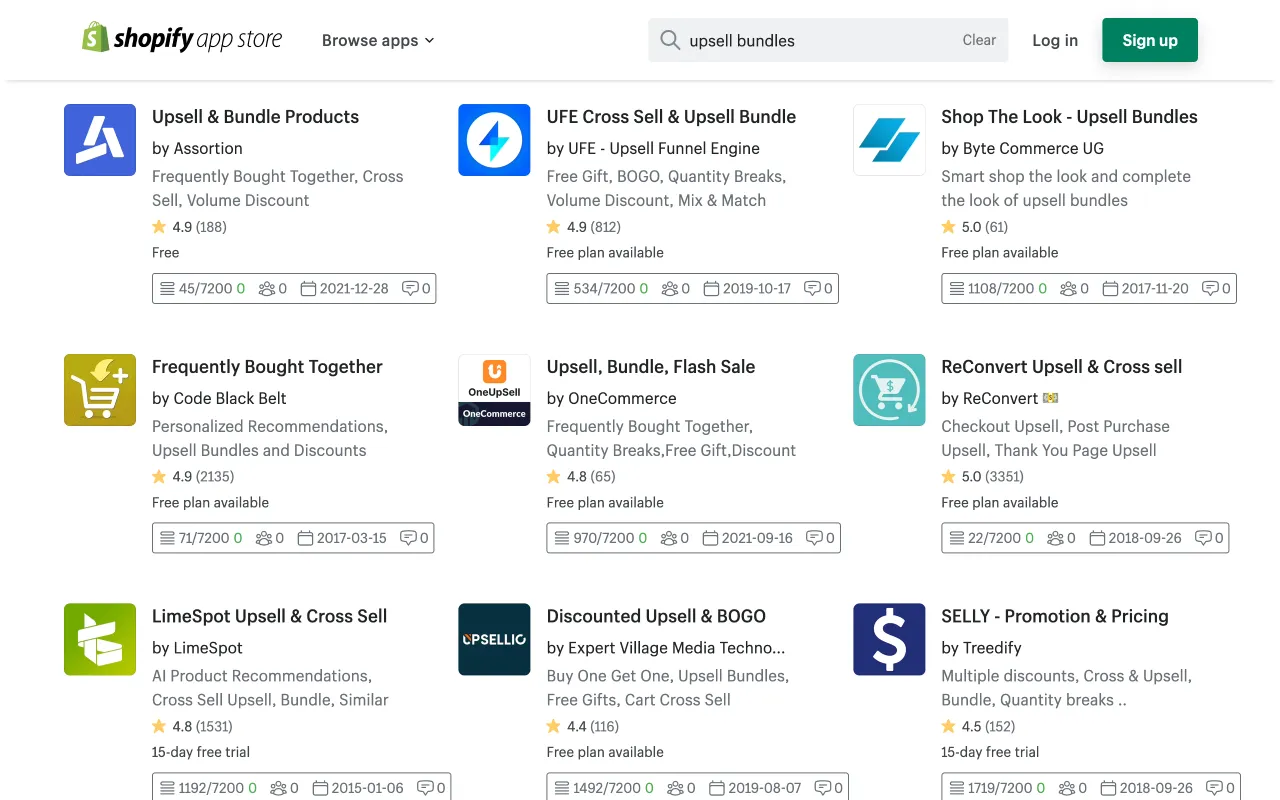
For large businesses, Shopify’s scalability extends to managing high volumes of transactions, extensive product catalogs, and complex business processes. The platform supports unlimited products and bandwidth, ensuring that your store can handle large spikes in traffic without compromising performance. Shopify’s infrastructure is built to support rapid scaling, allowing businesses to expand their operations seamlessly without the need to switch platforms or undergo significant technical overhauls. This flexibility makes Shopify an ideal solution for businesses that anticipate growth and need a platform that can evolve with their needs.
Shopify Plus for Enterprise-Level Businesses
Shopify Plus is Shopify’s enterprise-level solution, specifically designed for high-volume merchants and large businesses with complex requirements. Shopify Plus provides all the features of the standard Shopify platform, along with additional tools and services tailored to the needs of larger enterprises. One of the key benefits of Shopify Plus is its ability to handle massive traffic and transaction volumes, making it suitable for businesses with significant sales activity and global reach.
Shopify Plus offers advanced features such as customizable checkout processes, unlimited staff accounts, dedicated account management, and access to Shopify’s API for deeper customization and integration with other enterprise systems. The platform also supports automation through Shopify Flow, allowing businesses to automate various aspects of their operations, from inventory management to customer segmentation. This level of automation can significantly reduce operational overhead and improve efficiency, particularly for businesses that operate at scale.
Additionally, Shopify Plus provides enhanced security and compliance features, which are crucial for large enterprises handling sensitive customer data. The platform is fully PCI DSS compliant and offers advanced fraud detection and prevention tools. Shopify Plus also includes Shopify’s Launchpad tool, which helps businesses plan and execute high-volume sales events, such as product launches or holiday promotions, ensuring a smooth and successful execution.
Another advantage of Shopify Plus is its global capabilities. The platform supports multi-currency transactions, multi-language storefronts, and multiple warehouses, making it easier for businesses to expand into international markets. Shopify Plus also offers priority support, with dedicated teams available to assist with any issues, ensuring that enterprise-level businesses have the resources they need to operate smoothly and efficiently.
In the Shopify vs Etsy comparison, Shopify’s scalability and the availability of Shopify Plus make it a superior choice for businesses looking to grow and expand their operations. Whether you’re just starting or managing a large enterprise, Shopify provides the tools and infrastructure necessary to support your business at every stage, ensuring that your eCommerce operations can scale smoothly as your business grows.
Etsy
In the Shopify vs Etsy comparison, one of the most significant differences lies in how each platform supports—or limits—business growth. Etsy is primarily designed for individual artisans, small-scale sellers, and businesses focused on handmade, vintage, or unique items. While Etsy provides a supportive ecosystem for these types of sellers, there are inherent limitations when it comes to scaling a business on the platform. Here’s a detailed look at the challenges of scaling on Etsy and the options available for growing within Etsy’s ecosystem:
Limitations of Scaling on Etsy (Marketplace Constraints)
Etsy’s structure as a marketplace is both its strength and its limitation. While the platform offers instant access to a large audience of buyers who are specifically looking for unique, handmade, or vintage items, it also imposes certain constraints that can hinder a business’s ability to scale. One of the primary limitations is the lack of customization and branding opportunities. Unlike Shopify, where sellers can fully control their store’s design and user experience, Etsy requires sellers to operate within a standardized marketplace framework. This means that as your business grows, you may find it challenging to differentiate your brand or create a unique customer experience that stands out from other sellers.
Another significant limitation is Etsy’s fee structure, which can become increasingly burdensome as your sales volume increases. Etsy charges a listing fee, a transaction fee, and a payment processing fee on every sale, which can add up quickly, especially for businesses with narrow profit margins.
Additionally, Etsy’s search algorithm tends to favor newer listings and those offering free shipping, which can make it difficult for established sellers to maintain visibility as their product catalog grows. The marketplace’s algorithmic constraints can limit your ability to scale organically, as you may need to continuously invest in promoted listings or Etsy Ads to stay competitive. Moreover, Etsy’s focus on handmade and vintage items inherently limits the types of products you can sell. If you’re looking to expand into mass-produced goods or a broader product range, Etsy may not be the right platform. The marketplace’s policies and community standards are geared toward preserving its niche, which can restrict your ability to diversify your product offerings as your business grows.
Options for Growing a Business Within Etsy’s Ecosystem
Despite these limitations, there are still several ways to grow your business within Etsy’s ecosystem. One of the most effective strategies is to focus on building a strong brand presence through your product listings, customer service, and marketing efforts. While Etsy limits customization, you can still create a cohesive brand experience by using consistent branding elements in your shop’s banner, logo, and product photos. High-quality product photography and detailed descriptions can help your listings stand out and attract more customers.
Expanding your product line within Etsy’s guidelines is another way to grow. This might involve offering more variations of your current products, creating complementary items, or expanding into related categories that align with Etsy’s marketplace. By diversifying your product offerings, you can appeal to a broader audience and increase your sales potential without leaving the platform.
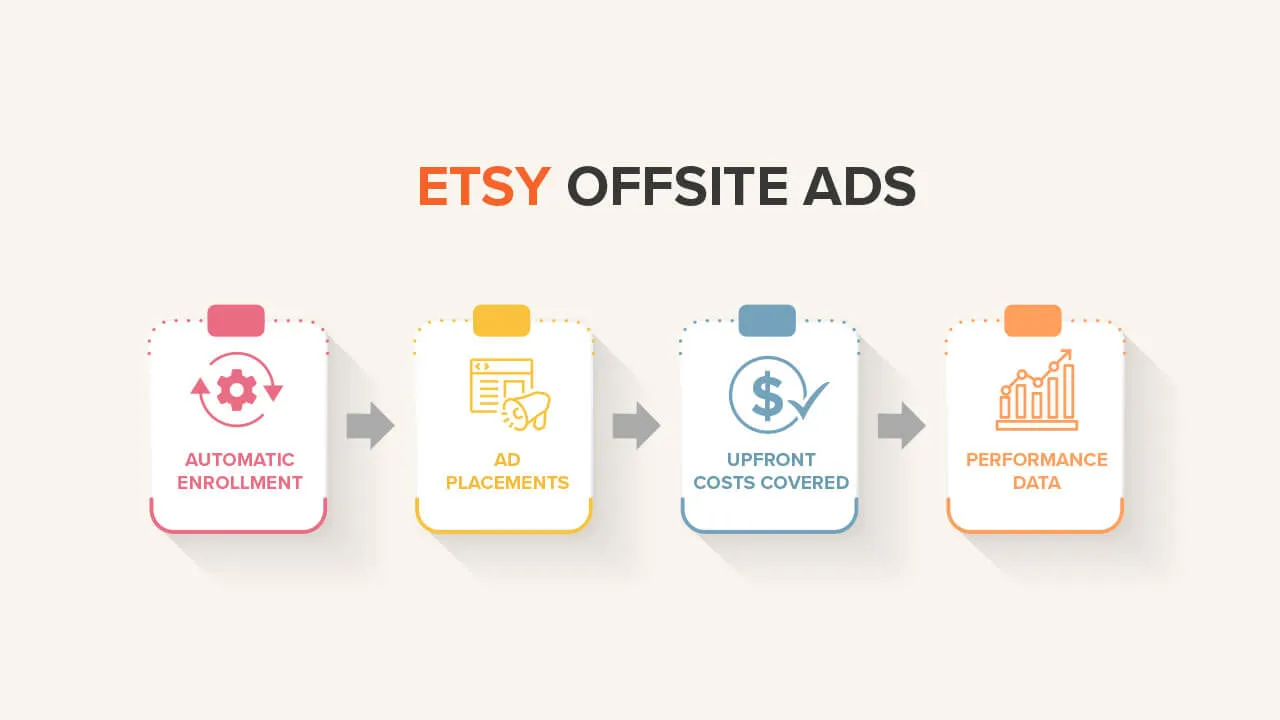
Utilizing Etsy’s marketing tools can also help you scale your business. Etsy Ads, social media integration, and participation in Etsy’s seasonal promotions or sales events can boost your visibility and drive more traffic to your shop. Additionally, building a loyal customer base through exceptional customer service and consistent communication can lead to repeat business, which is crucial for sustained growth on Etsy. Leveraging Etsy’s review system to gather positive feedback can also enhance your shop’s reputation and increase buyer trust, further supporting your growth efforts.
Some sellers may choose to complement their Etsy shop with additional sales channels, such as social media or even a standalone website, to expand their reach beyond Etsy’s marketplace. While Etsy restricts certain types of external links, promoting your Etsy shop through platforms like Instagram, Pinterest, or Facebook can help attract new customers and increase sales.
In the Shopify vs Etsy debate, Etsy’s scalability is more limited compared to Shopify’s, but there are still viable strategies for growth within the platform’s ecosystem. For sellers committed to the handmade, vintage, or unique market, focusing on brand development, product diversification, and leveraging Etsy’s marketing tools can help drive growth, even within the constraints of the marketplace.
Analytics and Reporting
Shopify
In the Shopify vs Etsy comparison, one area where Shopify distinctly excels is in its robust analytics and reporting tools. Shopify offers a comprehensive suite of features designed to help merchants track their store’s performance, understand customer behavior, and make data-driven decisions to optimize their business strategies. Here’s a detailed exploration of Shopify’s analytics and reporting capabilities:
Overview of Shopify’s Analytics and Reporting Tools
Shopify provides merchants with a wide range of built-in analytics and reporting tools that cover every aspect of eCommerce performance. These tools are accessible directly from the Shopify dashboard and are designed to give you a clear and detailed understanding of your store’s metrics. Shopify’s analytics include basic metrics such as total sales, average order value, and customer acquisition sources, as well as more advanced data like customer lifetime value, conversion rates, and sales by traffic source. The platform also offers customizable reports, allowing merchants to create and view reports tailored to their specific business needs. These reports can cover a variety of areas, including sales, products, customers, marketing, and finances.
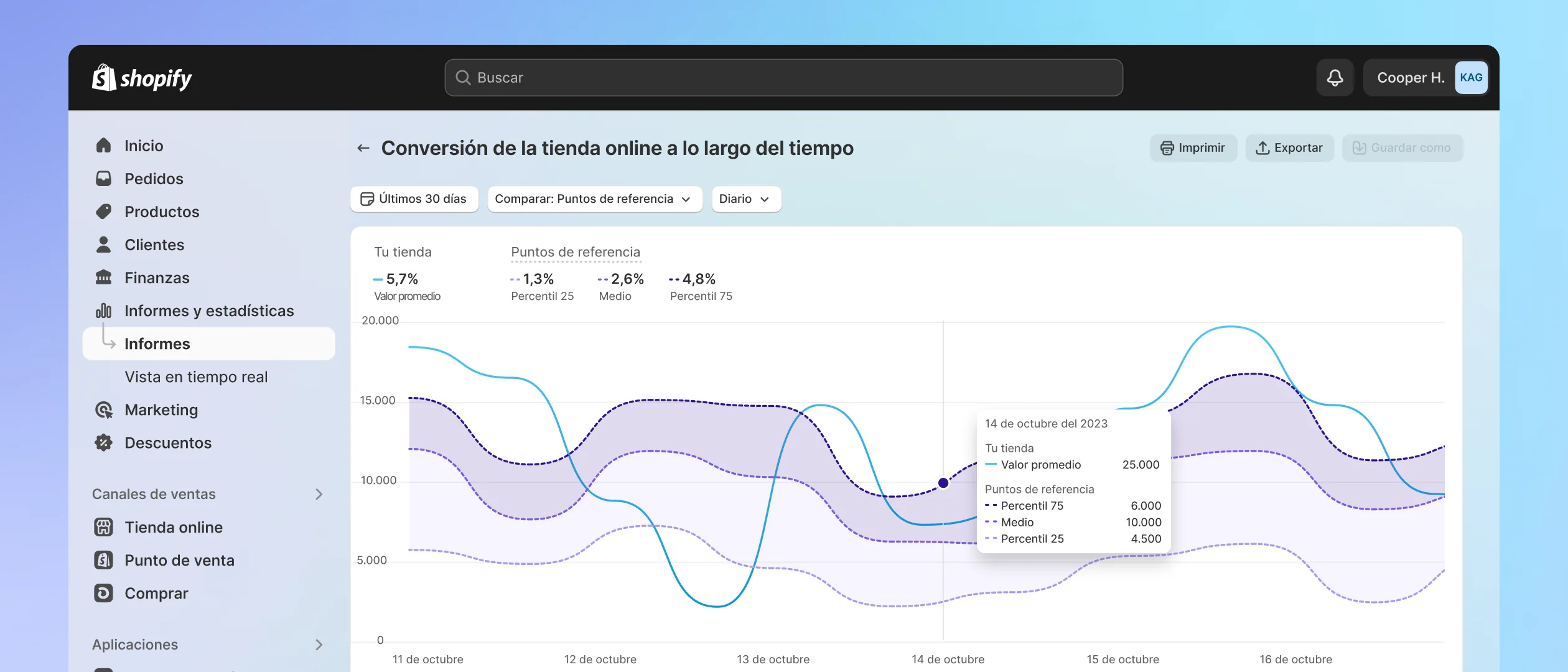
Additionally, Shopify provides insights into product performance, helping merchants identify bestsellers, slow-moving inventory, and potential areas for product development. The ability to track and analyze such a wide range of data points is invaluable for businesses looking to refine their operations and drive growth.
Importance of Data-Driven Decision-Making in eCommerce
In the rapidly evolving world of eCommerce, data-driven decision-making is crucial for maintaining a competitive edge. Shopify’s analytics and reporting tools empower merchants to make informed decisions based on real-time data rather than relying on intuition or guesswork. By analyzing key metrics, merchants can identify trends, optimize marketing strategies, improve customer experiences, and increase profitability. For instance, understanding which traffic sources generate the most sales allows businesses to allocate their marketing budgets more effectively.
Similarly, analyzing customer behavior can reveal opportunities for upselling or cross-selling, leading to higher average order values. Shopify’s analytics tools also enable merchants to monitor the effectiveness of their promotions and discounts, ensuring that these efforts contribute positively to the bottom line. By leveraging data, Shopify merchants can continuously refine their business strategies, respond to market changes, and capitalize on new opportunities, ultimately leading to more sustainable growth and success.
Integration with Third-Party Analytics Tools
While Shopify’s built-in analytics are powerful, the platform also supports integration with a wide range of third-party analytics tools, allowing merchants to further enhance their data analysis capabilities. One of the most popular integrations is Google Analytics, which provides deeper insights into website traffic, user behavior, and conversion tracking. Google Analytics allows merchants to track granular data, such as how visitors navigate through their site, where they drop off, and which products or pages lead to the highest conversions. This level of detail is critical for optimizing the user experience and maximizing conversion rates.
Shopify also integrates with other advanced analytics tools like Mixpanel, Kissmetrics, and Glew, each offering unique features tailored to specific business needs. These integrations enable merchants to conduct A/B testing, analyze customer cohorts, and predict future sales trends based on historical data. By combining Shopify’s native analytics with third-party tools, merchants can gain a more comprehensive understanding of their business and make more informed decisions to drive growth and profitability.
In the Shopify vs Etsy debate, Shopify’s advanced analytics and reporting tools provide a significant advantage for merchants who prioritize data-driven decision-making. The platform’s ability to offer detailed insights, customizable reports, and seamless integration with third-party analytics tools makes it an invaluable resource for businesses of all sizes looking to optimize their operations and achieve long-term success in the competitive eCommerce landscape.
Etsy
In the Shopify vs Etsy comparison, analytics and reporting tools are essential for sellers who want to understand their business performance and make informed decisions. Etsy, while providing some valuable insights, offers a more limited set of analytics tools compared to Shopify. These tools are designed to cater to individual sellers and small businesses, focusing on simplicity and ease of use. Here’s a detailed look at Etsy’s reporting tools, how sellers can use Etsy Stats to track performance and trends, and the limitations of Etsy’s analytics when compared to Shopify:
Etsy’s Reporting Tools and Insights for Sellers
Etsy provides a set of basic reporting tools aimed at helping sellers monitor their shop’s performance. These tools are accessible through the Etsy dashboard and offer insights into key metrics such as sales, traffic sources, and customer engagement. Etsy’s reporting tools include metrics like total sales, number of orders, revenue, and conversion rates. Sellers can also view data on their shop’s visitors, including where the traffic is coming from (direct, search, social media, etc.) and which keywords buyers used to find their products.
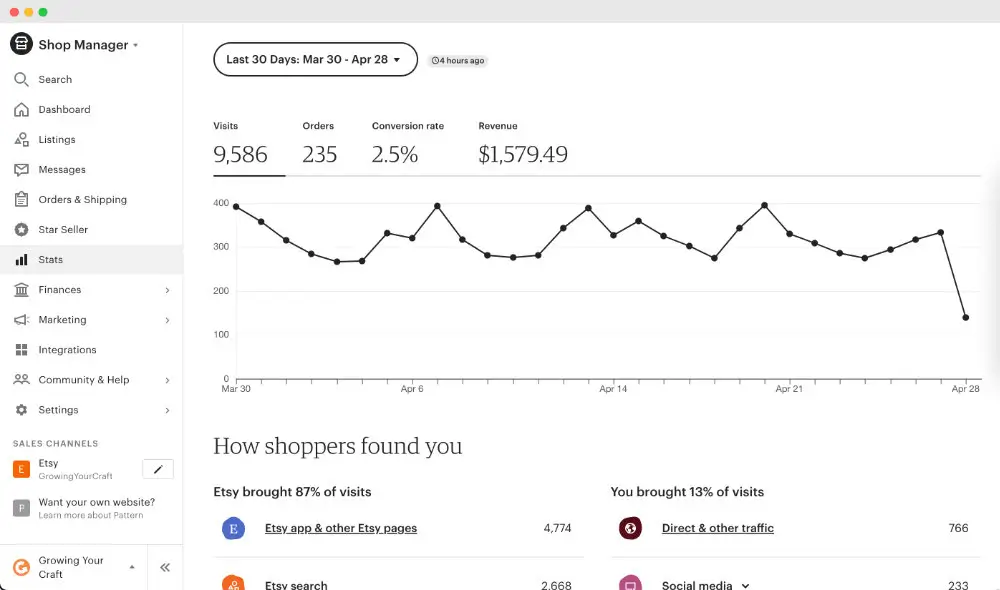
Additionally, Etsy offers insights into the performance of individual listings, allowing sellers to see which products are generating the most views and sales. While these tools provide a helpful overview of shop performance, they are relatively basic and may not offer the depth of analysis that growing businesses need to optimize their operations fully.
Using Etsy Stats to Track Performance and Trends
Etsy Stats is the platform’s primary tool for tracking shop performance and identifying trends over time. With Etsy Stats, sellers can view a variety of data points, including sales trends, traffic sources, and customer behavior. The tool allows sellers to filter data by different time periods (e.g., daily, weekly, monthly), making it easier to spot patterns and understand how specific events or promotions impact their shop’s performance. For example, sellers can use Etsy Stats to track the effectiveness of a sale or a new product launch by comparing traffic and sales data before, during, and after the event. Etsy Stats also provides insights into customer demographics, such as the geographic location of buyers, which can help sellers tailor their marketing efforts to target specific regions more effectively.
However, while Etsy Stats is useful for basic performance tracking, it lacks the advanced analytics and customizable reporting features found in platforms like Shopify, which can limit a seller’s ability to make data-driven decisions for long-term growth.
Limitations of Etsy’s Analytics Compared to Shopify
When comparing Etsy’s analytics to those offered by Shopify, several limitations become apparent. One of the most significant drawbacks of Etsy’s analytics is the lack of depth and customization. Unlike Shopify, which provides detailed, customizable reports and the ability to integrate with third-party analytics tools, Etsy’s analytics are more standardized and cannot be tailored to the specific needs of a seller’s business. This limitation makes it difficult for sellers to conduct in-depth analysis or track more complex metrics, such as customer lifetime value, cohort analysis, or detailed conversion tracking.
Additionally, Etsy does not offer native integrations with advanced analytics tools like Google Analytics or Mixpanel, which further restricts sellers who want to dive deeper into their data. Another limitation is the focus of Etsy’s analytics on individual listings and short-term trends, rather than providing a holistic view of the entire business. While this is sufficient for smaller shops with a limited product range, it can be a significant disadvantage for sellers who are looking to scale their operations and need a more comprehensive understanding of their business performance. Furthermore, Etsy’s marketplace structure means that sellers are competing with other shops for visibility, and the platform’s analytics tools do not provide enough detailed insights to help sellers optimize their listings and marketing strategies effectively.
In the Shopify vs Etsy debate, Etsy’s analytics tools are designed for ease of use and are suitable for small-scale sellers who need basic insights into their shop’s performance. However, for businesses that require more advanced data analysis and reporting capabilities, Shopify’s analytics tools offer a more powerful and flexible solution. Shopify’s ability to provide detailed, customizable reports and integrate with third-party analytics platforms makes it a better choice for sellers who want to make data-driven decisions and scale their operations over time.
Shopify vs Etsy: Final Evaluation
Summary
Here’s a summary of the detailed comparison between Shopify vs Etsy:
Category | Shopify | Etsy |
Store Setup & Customization | Highly customizable with extensive themes, plugins, and apps. Flexibility in design and branding, suitable for businesses of all sizes. | Easy to set up but limited customization within Etsy’s marketplace framework. Branding is restricted to standardized templates and minimal customization. |
Product Listings & Management | Robust tools for managing large inventories, bulk editing, and detailed product categorization. Ideal for businesses with extensive product catalogs. | Simpler tools suited for managing smaller inventories. Limited product categories and variations, more restrictive for complex listings. |
Sales Channels & Marketing | Integrates with multiple sales channels (e.g., social media, marketplaces). Extensive marketing tools and apps, including advanced SEO features. | Built-in marketplace with a global reach. Limited marketing options, primarily through Etsy Ads and social media integration. Less sophisticated SEO tools. |
Customer Base & Market Reach | Targets businesses of all sizes with a diverse customer base. Strong global reach with opportunities for international sales and diverse demographics. | Focuses on individuals seeking handmade, vintage, and unique items. Strong customer loyalty within a niche market, but less diverse and with a narrower reach. |
Payment Processing & Security | Shopify Payments and multiple third-party gateways. Strong security features including SSL certificates and PCI compliance. Transparent processing costs. | Etsy Payments with limited third-party gateways. Strong security and buyer protection, but higher transaction fees and currency conversion costs. |
Shipping & Fulfillment | Comprehensive shipping options with major carrier integrations. Advanced tools for managing shipping rates, labels, and international fulfillment. | Basic shipping tools and options. Calculated shipping costs, limited international shipping features, and less control over fulfillment processes. |
Scalability & Growth Potential | Highly scalable with features for small to enterprise-level businesses. Shopify Plus offers advanced tools for large-scale operations and global reach. | Limited scalability due to marketplace constraints. Options for growth within Etsy’s ecosystem are more restricted and focused on small-scale operations. |
Analytics and Reporting | Advanced analytics and reporting tools with customizable reports. Integration with third-party analytics tools for detailed insights and data-driven decisions. | Basic analytics focused on sales and traffic data. Limited reporting capabilities compared to Shopify, with fewer options for deep data analysis. |
This table provides a concise comparison of Shopify vs Etsy across several key categories, highlighting the strengths and limitations of each platform.
Shopify vs Etsy: Pros and Cons
When comparing Shopify vs Etsy, it’s essential to consider the specific advantages and disadvantages of each platform. Both Shopify and Etsy cater to different types of sellers, and understanding their strengths and limitations can help you make an informed decision about which platform best suits your business needs. Below, we delve into the pros and cons of Shopify and Etsy to provide a comprehensive analysis of each platform.
Shopify Pros and Cons
When weighing Shopify vs Etsy, it’s important to consider the distinct advantages and challenges that come with using Shopify. Below are the key pros and cons of Shopify, highlighting its strengths in customization and scalability, as well as potential drawbacks in cost and complexity.
Pros of Shopify:
- Customization and Branding: One of the most significant advantages of Shopify in the Shopify vs Etsy comparison is the level of customization it offers. Shopify allows merchants to create a fully customized online store that aligns with their brand identity. With a wide range of themes, both free and paid, and the ability to modify the HTML and CSS, Shopify provides the tools necessary to create a unique and professional-looking storefront. This flexibility extends to the checkout process, where merchants can customize every aspect to ensure a seamless brand experience.
- Scalability: Shopify is designed to grow with your business, making it an ideal choice for businesses of all sizes. Whether you’re just starting or running a large enterprise, Shopify offers scalable solutions that cater to different stages of business growth. For small businesses, Shopify’s basic plans provide all the essential tools needed to launch and manage an online store. As your business expands, you can upgrade to higher-tier plans or Shopify Plus, which offers advanced features and support for enterprise-level businesses.
- Wide Range of Sales Channels: Shopify excels in multi-channel selling, allowing merchants to integrate their online store with various sales channels, including social media platforms like Facebook, Instagram, and Pinterest, as well as marketplaces like Amazon and eBay. This integration makes it easier for businesses to reach a broader audience and sell across multiple platforms without managing separate inventories or sales processes. Shopify’s point-of-sale (POS) system also enables businesses to unify their online and offline sales, providing a cohesive shopping experience for customers.
- Comprehensive Analytics and Reporting: Shopify provides powerful analytics and reporting tools that help merchants track their store’s performance, understand customer behavior, and make data-driven decisions. The platform’s built-in analytics offer insights into key metrics such as sales, traffic, and conversion rates. For businesses that require more detailed analysis, Shopify integrates seamlessly with third-party analytics tools like Google Analytics, enabling merchants to dive deeper into their data and refine their strategies.
- Extensive App Ecosystem: Shopify’s App Store offers thousands of apps and integrations that extend the functionality of your online store. Whether you need tools for marketing, inventory management, customer support, or SEO, Shopify’s app ecosystem has a solution. This extensive range of apps allows merchants to tailor their stores to meet specific business needs and easily add new features as their business grows.
Cons of Shopify:
- Cost: While Shopify offers a wide range of features, the platform can become expensive, especially as your business grows and requires more advanced features. In addition to the monthly subscription fee, merchants may incur additional costs for premium themes, apps, and transaction fees if they use third-party payment gateways instead of Shopify Payments. These costs can add up, particularly for small businesses or startups operating on a tight budget.
- Learning Curve: Although Shopify is known for its user-friendly interface, some merchants may find the platform’s extensive features and customization options overwhelming, especially if they lack technical expertise. Setting up a fully customized store may require some knowledge of coding or the help of a developer, which can be a barrier for those new to eCommerce.
- Transaction Fees: If merchants choose to use a third-party payment gateway instead of Shopify Payments, Shopify charges an additional transaction fee on each sale. This fee ranges from 0.5% to 2% depending on the subscription plan, which can impact profit margins, especially for businesses with high sales volumes.
Etsy Pros and Cons
In the Shopify vs Etsy comparison, Etsy shines for its ease of use and built-in marketplace, but it also has some limitations that can impact long-term growth. Here are the key pros and cons of using Etsy for your eCommerce business.
Pros of Etsy:
- Built-in Marketplace with Niche Audience: Etsy’s most significant advantage in the Shopify vs Etsy debate is its built-in marketplace, which attracts millions of buyers specifically looking for handmade, vintage, and unique items. This niche audience is highly targeted, allowing sellers to reach potential customers without extensive marketing efforts. Etsy’s marketplace structure means that sellers benefit from Etsy’s brand recognition and the trust that buyers have in the platform, which can lead to higher sales.
- Ease of Use: Etsy is designed to be straightforward and accessible, making it an excellent choice for individual artisans, crafters, and small business owners who want to set up an online store quickly and with minimal hassle. The platform requires no technical expertise, and the process of listing products, managing orders, and handling payments is streamlined and easy to navigate. This simplicity allows sellers to focus on creating and selling products rather than managing the technical aspects of running an online store.
- Lower Initial Costs: Compared to Shopify, Etsy has a lower barrier to entry, with minimal upfront costs. Etsy charges a small listing fee for each item and a transaction fee on each sale, but there are no monthly subscription fees, making it more affordable for sellers who are just starting or those who sell only a few items. This cost structure makes Etsy an attractive option for hobbyists or part-time sellers who want to test the waters of eCommerce without a significant financial commitment.
- Integrated Marketing Tools: While Etsy’s marketing tools are not as extensive as Shopify’s, the platform does offer several built-in promotional options that can help sellers increase their visibility. Etsy Ads allow sellers to promote their listings within Etsy’s search results, and the platform’s social media integration makes it easy to share products across various social channels. Additionally, Etsy’s promotional tools, such as offering discounts and free shipping, are easy to implement and can help boost sales.
- Community and Support: Etsy has a strong sense of community, with numerous resources available to help sellers succeed. The platform’s forums and Etsy Teams provide a space for sellers to connect, share advice, and collaborate. Etsy also offers a wealth of educational content, including guides, webinars, and tutorials, to help sellers improve their shops and grow their businesses. This supportive environment is particularly beneficial for new sellers who may need guidance as they navigate the world of eCommerce.
Cons of Etsy:
- Limited Customization and Branding: One of the main drawbacks of Etsy in the Shopify vs Etsy comparison is the lack of customization options. Sellers on Etsy are restricted to the platform’s standardized templates and branding, which limits their ability to create a unique store that reflects their brand identity. Unlike Shopify, where merchants have full control over their store’s design, Etsy’s marketplace structure means that all shops look similar, which can make it challenging for sellers to stand out.
- Fees and Cost Structure: While Etsy’s initial costs are low, the platform’s fee structure can become burdensome for sellers with high sales volumes. Etsy charges a 6.5% transaction fee on each sale, including shipping, as well as a payment processing fee that varies by country. Additionally, there is a listing fee for each item, which must be renewed every four months. These fees can add up quickly, particularly for sellers with low-margin products, and may impact overall profitability.
- Limited Scalability: Etsy is best suited for small-scale sellers and may not be the ideal platform for businesses looking to scale significantly. The platform’s marketplace constraints, such as limited customization, category restrictions, and reliance on Etsy’s search algorithm, can hinder growth opportunities for sellers who want to expand their product offerings or reach a broader audience. As businesses grow, they may find Etsy’s tools and features too restrictive, leading them to consider moving to a more scalable platform like Shopify.
- Competition and Saturation: As Etsy has grown in popularity, so has the competition within the marketplace. Sellers often face stiff competition from other shops offering similar products, which can make it difficult to maintain visibility and attract customers. Etsy’s search algorithm prioritizes newer listings and those offering free shipping, which can further challenge established sellers trying to compete in a saturated market. This high level of competition can lead to price undercutting, reducing profit margins for sellers.
- Dependence on Etsy’s Platform: Sellers on Etsy are entirely dependent on the platform for their business operations, which can be risky. Changes to Etsy’s policies, fee structures, or search algorithm can significantly impact a seller’s business. Unlike Shopify, where merchants have full control over their online store and customer data, Etsy sellers are subject to the platform’s rules and limitations, which can create challenges for long-term business sustainability.
Price Comparison: Shopify vs Etsy
When evaluating Shopify vs Etsy, price is a crucial factor that can influence your choice of platform. Both Shopify and Etsy have distinct pricing structures that cater to different types of sellers. Shopify’s pricing is based on a subscription model with various tiers, offering a wide range of features depending on the plan. In contrast, Etsy operates on a pay-as-you-go model, with fees associated with listing products, transactions, and payment processing. Understanding the cost implications of each platform is essential for determining which one aligns best with your business needs and budget.
Pricing Aspect | Shopify | Etsy |
Basic Subscription Fee | Starts at $39 per month for the Basic Shopify plan. | No monthly subscription fee, but a $0.20 listing fee per item. |
Advanced Subscription Options | Shopify Plus plan available for enterprise-level businesses starting at $2,000 per month. | No advanced subscription options; costs are primarily per transaction and listing. |
Transaction Fees | 2.9% + $0.30 per transaction (using Shopify Payments). Additional fees apply for third-party gateways (0.5%-2%). | 6.5% transaction fee on total sales (including shipping). |
Payment Processing Fees | Included in transaction fees if using Shopify Payments. Additional fees for third-party gateways. | 3% + $0.25 per transaction (U.S. rates; varies by country). |
Listing Fees | No listing fees, unlimited products can be listed. | $0.20 per item, with renewal required every four months. |
App Costs | Free and paid apps available in Shopify’s App Store, which can increase monthly costs. | No direct app costs, but optional paid features like Etsy Ads. |
Custom Themes & Features | Premium themes available at one-time costs, ranging from $100-$350. | No custom themes; all shops use standard Etsy templates. |
Discounts & Shipping Costs | Discounted shipping rates available through carrier integrations. | Sellers can access discounted shipping rates, but must cover all shipping costs or factor them into pricing. |
Total Cost Considerations | Can be expensive as features and add-ons accumulate, especially for large businesses. | Lower upfront costs but cumulative fees for listings, transactions, and renewals can add up over time. |
When comparing Shopify vs Etsy on pricing, it’s clear that each platform caters to different types of sellers with varying budget considerations. Shopify offers a more structured pricing model with subscription plans that provide a broad range of features, making it suitable for businesses looking to scale and needing extensive customization and control over their online store. However, the costs can add up quickly, especially with the addition of premium themes, apps, and transaction fees for third-party payment gateways.
On the other hand, Etsy provides a lower-cost entry point, making it ideal for individual sellers, artisans, and small businesses who are just starting out or who operate on a smaller scale. The pay-as-you-go model with listing and transaction fees may seem more affordable upfront, but these costs can accumulate, particularly for sellers with high sales volumes or those who regularly renew their listings.
Ultimately, the choice between Shopify and Etsy in terms of price will depend on your business size, sales volume, and the level of control and customization you require. For those prioritizing flexibility and scalability, Shopify’s higher costs may be justified by the platform’s comprehensive features and support for growth. Conversely, for sellers looking to minimize upfront expenses and who prefer the simplicity of a marketplace environment, Etsy’s pricing structure may be more appealing.
Recommendation
Choosing the right platform between Shopify vs Etsy depends on your business goals, budget, and the nature of your products. Both platforms have distinct strengths and cater to different types of sellers. In this section, we’ll provide recommendations to help you decide whether Shopify or Etsy is the best fit for your business needs, based on their unique features and your specific requirements.
Choose Shopify When
When deciding between Shopify vs Etsy, it’s important to recognize the strengths of each platform and how they align with your business goals. Shopify is the better choice if you’re aiming for long-term growth, scalability, and brand development. Here’s why Shopify should be your platform of choice in several key scenarios:
You’re a Growing Company with a Large Inventory
If your business is expanding and you need to manage a large inventory, Etsy may not be the best fit. While Etsy is ideal for smaller operations, it can become restrictive as your product range grows. Shopify, on the other hand, offers a robust inventory management system designed to handle extensive product catalogs. Shopify’s system allows you to track and analyze your stock in real-time, making it easier to manage a wide range of products across multiple categories. This level of control ensures that you can keep up with demand, minimize stockouts, and optimize your supply chain, which is crucial for maintaining customer satisfaction and driving sales growth.
You Want to Establish a Strong Online Presence
Etsy is great for those who prefer the convenience of a marketplace, but it doesn’t offer the same level of control over branding and customer experience as Shopify. Shopify provides you with the tools to create a fully customized online store, allowing you to build a strong brand identity.
With Shopify, you can design a website that reflects your unique vision, control every aspect of the customer journey, and promote your business through your own web address. This level of customization is vital for businesses looking to stand out in a crowded market and build lasting relationships with their customers. Shopify’s flexibility also extends to its marketing tools, which allow you to engage with your audience through multiple channels, including social media, email, and content marketing.
You Have a Larger Budget and More Resources
Shopify is often viewed as a premium platform because it offers a wide range of features and integrations that come at a higher cost than Etsy. If you have a larger budget and more resources, Shopify is likely the better choice for your business. The platform’s extensive app ecosystem, advanced reporting tools, and support for third-party integrations provide you with the functionality needed to optimize your operations and scale your business. Whether you’re looking to implement advanced marketing strategies, automate your fulfillment process, or gain deeper insights into your sales data, Shopify’s features can accommodate your needs.
You’re Planning for Long-Term Growth
As your business evolves, you need a platform that can grow with you. Shopify’s scalability ensures that you won’t outgrow the platform as you expand your product offerings or enter new markets. With plans that cater to businesses of all sizes—from small startups to large enterprises—Shopify allows you to start with basic features and gradually upgrade as your needs change. This eliminates the need to switch platforms as you scale, saving you time and resources. If your goal is to become a major player in your industry and sell thousands of different products, Shopify provides the infrastructure and support to make that vision a reality.
You Want to Expand Beyond Arts and Crafts
While Etsy is tailored to sellers of handmade, vintage, and unique items, it can be limiting if you want to diversify your product range. Shopify, on the other hand, offers the flexibility to sell virtually anything, from fashion and electronics to digital products and services. This makes Shopify a better fit if you’re looking to expand beyond the arts and crafts market and tap into new customer segments. With Shopify, you’re not constrained by marketplace rules or categories, giving you the freedom to innovate and grow your business in new directions.
In the Shopify vs Etsy debate, Shopify emerges as the stronger choice for businesses that are serious about growth, branding, and long-term success. Its superior inventory management, customization options, and scalability make it an ideal platform for companies looking to establish a strong online presence and expand their operations. Whether you’re planning to become a major company or simply want the flexibility to grow, Shopify provides the tools and support you need to achieve your business goals.
Choose Etsy When
When evaluating Shopify vs Etsy, it’s essential to consider your business’s specific needs, especially if you’re just starting out with a small inventory of unique, handcrafted items. Etsy is an excellent choice for new merchants who are looking for an easy, low-cost way to sell their products online. Here’s why Etsy might be the right platform for you:
You’re a New Merchant with a Small Inventory
If you’re just beginning your eCommerce journey and have a small selection of handcrafted or distinctive items, Etsy should be your first stop. Unlike Shopify, which is designed for businesses that may have larger inventories and more complex needs, Etsy is tailored to sellers who are creating and selling unique, one-of-a-kind products.
Whether you’re an artisan making jewelry, a crafter producing handmade home décor, or an artist selling original prints, Etsy’s marketplace is specifically geared toward these types of products. This focus on handmade and vintage items means that your products are more likely to be seen by an audience already interested in the kinds of goods you’re offering, helping you connect with buyers who appreciate the value of unique, handmade items.
You Want to Avoid Upfront Fees
One of the biggest advantages of Etsy, especially for new sellers, is the absence of monthly subscription fees. Shopify, by comparison, requires a monthly fee even at its basic level. With Etsy, you can list your products with minimal financial commitment, making it an ideal platform if you’re unsure about how well your products will perform or if you’re just testing the waters of online selling.
The cost structure is straightforward: Etsy charges a small listing fee of $0.20 per item and a 6.5% transaction fee on sales. This pay-as-you-go model is perfect for sellers who want to minimize upfront costs and only pay fees when they make a sale. This low-risk approach allows you to start selling without the pressure of recurring fees, making Etsy an accessible option for those on a tight budget.
You’re Looking for a Low-Risk, Cost-Effective Option
For new businesses or part-time sellers, managing costs is crucial. If you’re operating on a limited budget and anticipate a lower volume of sales, Etsy’s fee structure can be more cost-effective than Shopify. Since there are no monthly fees, you only incur costs when you list a product or make a sale, allowing you to keep more of your profits. Etsy’s lower transaction fees also mean that you can sell without the additional costs associated with third-party payment gateways, which can be a factor with Shopify. This makes Etsy a great choice if you’re still building your brand and customer base and need to keep your overheads low while you test the market.
You Sell Handmade Goods Occasionally
If you’re a hobbyist or someone who creates handmade goods as a side project, Etsy is perfectly suited to your needs. The platform is designed to accommodate sellers who may not have a large inventory or who sell on a more casual basis. Etsy’s ease of use is one of its standout features, making it incredibly simple to list products, manage orders, and handle payments. Even if you’re not tech-savvy, you can quickly set up your shop and start selling without the need for complex integrations or customizations. This simplicity is ideal for those who want to focus on their craft rather than the technical aspects of running an online store.
You Want to Tap Into an Established Marketplace
Etsy offers access to a built-in audience that is already interested in handcrafted and vintage items, which can be a significant advantage for new sellers. Unlike Shopify, where you need to drive traffic to your site, Etsy’s marketplace provides exposure to millions of potential buyers who visit the platform specifically looking for unique, artisanal products. This can help you generate sales more quickly and build a customer base without investing heavily in marketing and promotion. Etsy’s reputation as a marketplace for unique, quality items can also lend credibility to your brand, helping you gain the trust of buyers.
In the Shopify vs Etsy comparison, Etsy is the ideal platform for new sellers, hobbyists, and small creative businesses who are just starting out with a limited inventory and budget. It offers a low-risk, cost-effective way to enter the world of eCommerce without the need for significant upfront investment. Etsy’s focus on handmade, vintage, and unique items, combined with its ease of use and access to an established marketplace, makes it the perfect choice for those looking to sell on a smaller scale or test the market for their products. As long as your business remains focused on handmade goods and doesn’t require the extensive features and scalability offered by platforms like Shopify, Etsy will meet your needs and help you grow your business at your own pace.
How to Combine Shopify and Etsy for Maximum Profit
In today’s competitive eCommerce landscape, combining the strengths of both Shopify and Etsy can be a strategic way to maximize your profits and expand your business reach. By leveraging the unique advantages of each platform, you can create a more robust and diversified online presence that taps into different markets and customer bases. Here’s how you can effectively combine Shopify and Etsy to drive higher sales and streamline your operations.
Utilize Sales on Both Platforms
To expand your reach and increase conversion rates, consider selling different products on Shopify and Etsy. Etsy is renowned for its large, established community of buyers who are specifically looking for handmade, vintage, and unique products. By selling on Etsy, you can tap into this niche market and attract customers who appreciate artisanal goods.
Meanwhile, having your own Shopify store allows you to reach a different audience—one that may not be familiar with Etsy or is specifically searching for your brand. This dual-platform approach enables you to cater to various customer preferences, widening your overall market and increasing your chances of making a sale. For example, you might offer exclusive, high-end products on Shopify while listing smaller, craft-oriented items on Etsy to appeal to both premium and budget-conscious buyers.
Integrate Your Platforms
To efficiently manage your business across both Shopify and Etsy, consider using an integration app from the Shopify App Store. These apps allow you to sync order tracking, product information, and inventory between the two platforms, ensuring that you maintain consistency across your online stores. If you already have an Etsy shop but want greater control over your branding, you can move your Etsy store to Shopify, design a branded storefront, and then add Etsy as a sales channel. This approach gives you the best of both worlds: the branding and customization power of Shopify, along with the built-in marketplace audience of Etsy.
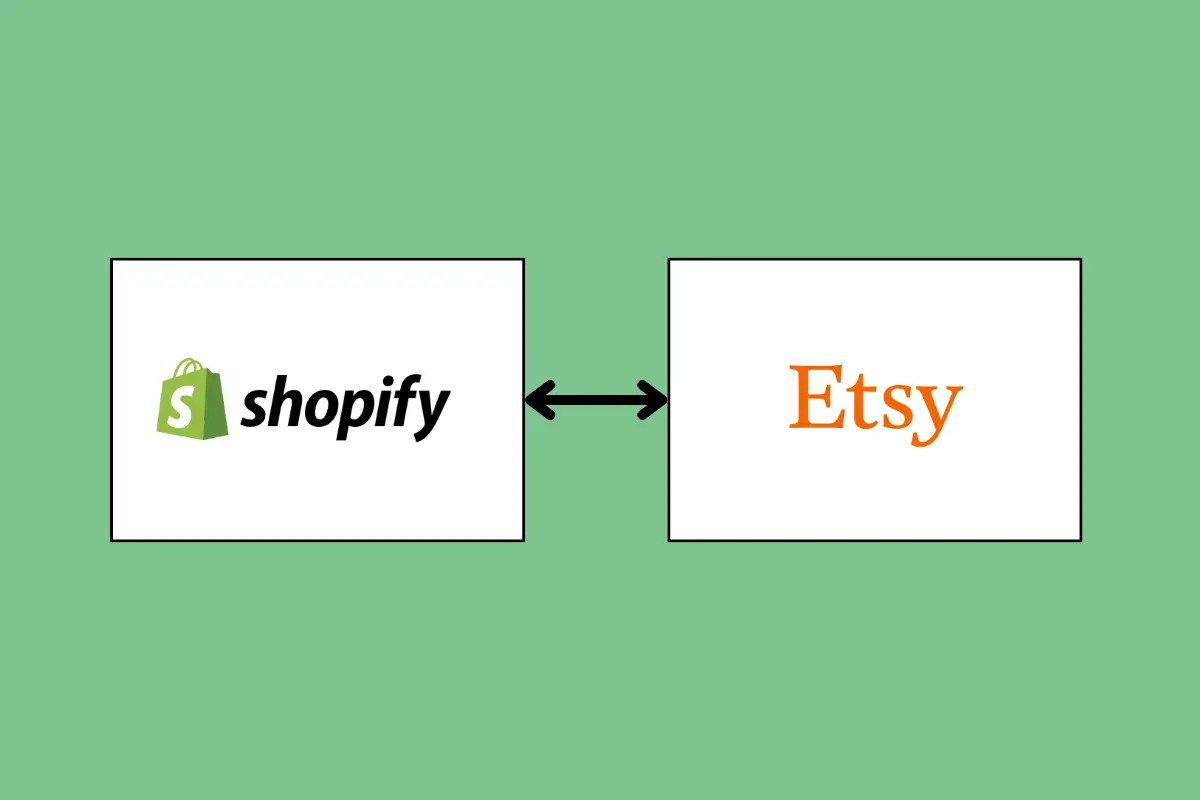
Etsy integrations range from free to paid, with free options offering basic capabilities and paid options providing more advanced features. For example, paid Etsy integrations typically include inventory management, order management, and shipping management—tools that can help streamline your operations, reduce manual tasks, and improve efficiency. By integrating your Shopify and Etsy stores, you can manage all aspects of your business from a single admin panel, which saves time and minimizes errors. This integration also allows you to focus on other critical areas of your business, such as marketing, customer service, and product development.
Optimize Your Listings
Optimizing your product listings on both Shopify and Etsy is crucial for improving visibility and driving sales. Make sure that your listings are well-optimized for search engines and easy for customers to navigate. This involves choosing relevant and descriptive keywords for your products and incorporating them into your product titles, descriptions, and tags. By doing so, you increase the likelihood that your products will appear in search results, whether customers are searching on Google or directly within Etsy and Shopify.
Additionally, high-quality product images, clear descriptions, and compelling calls to action are essential for converting browsers into buyers. Ensure that your listings provide all the necessary information customers need to make a purchase decision, including size, material, shipping options, and return policies. By optimizing your listings, you enhance the customer experience and increase the chances of a sale.
Monitor Your Sales and Analytics
Regularly monitoring your sales and analytics on both Shopify and Etsy is key to understanding what is working and what needs improvement. Both platforms offer built-in analytics tools that provide valuable insights into your sales, traffic, and customer behavior. On Shopify, you can track metrics such as total sales, average order value, and customer acquisition sources. Etsy’s Stats feature allows you to monitor your shop’s performance, including views, orders, and revenue. By analyzing this data, you can identify trends, optimize your marketing strategies, and make informed decisions to improve your overall business performance. For example, if you notice that certain products are performing better on Etsy than on Shopify, you might decide to promote those products more heavily on Etsy or adjust your pricing and marketing strategies on Shopify. Conversely, if you see that your Shopify store is attracting more traffic but not converting as well, you might revisit your site design, product descriptions, or checkout process to identify areas for improvement.
Combining Shopify and Etsy can be a powerful strategy to maximize your eCommerce profits by leveraging the strengths of both platforms. By selling on both sites, integrating your operations, optimizing your listings, and closely monitoring your performance, you can expand your reach, increase sales, and streamline your business processes. Investing in a paid Etsy integration may offer additional benefits, such as enhanced inventory and order management, which can further improve efficiency and profitability. Ultimately, the key to success is to choose the integration and approach that best aligns with your business needs and goals, allowing you to capitalize on the unique opportunities offered by both Shopify and Etsy.
Conclusion
In the ongoing Shopify vs Etsy comparison, it’s clear that both platforms offer unique benefits and cater to different types of sellers. The choice between Shopify and Etsy ultimately depends on your specific business needs, goals, budget, and resources.
Shopify is the ideal platform for those who envision building a robust, scalable online store with complete control over branding and customer experience. It’s a comprehensive eCommerce solution designed to grow with your business, offering extensive customization options, a wide range of payment and shipping solutions, and powerful tools for managing large inventories. If your goal is to establish a strong online presence, expand beyond niche markets, and have the flexibility to scale your operations as your business grows, Shopify is the clear choice. It’s particularly suited for businesses with a larger budget and the resources to invest in building a distinct brand identity and a professional online storefront.
On the other hand, Etsy is an excellent option for artisans, hobbyists, and small-scale sellers who specialize in handmade, vintage, and unique products. Etsy’s marketplace provides an accessible and supportive environment for those just starting out, with low upfront costs and a built-in audience that actively seeks out the kinds of products you’re offering. For sellers on a tight budget or those who are unsure about the demand for their products, Etsy’s pay-as-you-go model offers a low-risk entry into the world of eCommerce. It’s a platform where you can easily set up shop and start selling without the need for extensive technical knowledge or a significant financial commitment.
However, to truly maximize your profits and reach your business goals, the best strategy might be to leverage the strengths of both platforms. By integrating Shopify and Etsy, you can benefit from Shopify’s powerful eCommerce features while also tapping into Etsy’s dedicated community of buyers. This combined approach allows you to broaden your reach, diversify your product offerings, and appeal to different customer segments. For example, you can use Etsy to attract customers looking for unique, handcrafted items while using Shopify to build a more extensive and customizable online store that serves a broader market.
Optimizing your listings on both platforms, integrating your operations, and closely monitoring your sales and analytics can help you streamline your business processes and increase your overall efficiency. This dual-platform strategy not only expands your market reach but also provides the flexibility to scale your business as it grows, ensuring that you can adapt to changing market conditions and customer preferences.
If you’re looking to enhance your Shopify store to complement your Etsy shop, our team of Shopify experts is ready to assist you. Whether it’s optimizing your store for better performance, integrating it with Etsy, or helping you develop a cohesive brand strategy across both platforms, we’re here to help you build a thriving online business that maximizes profits and meets your long-term goals.


